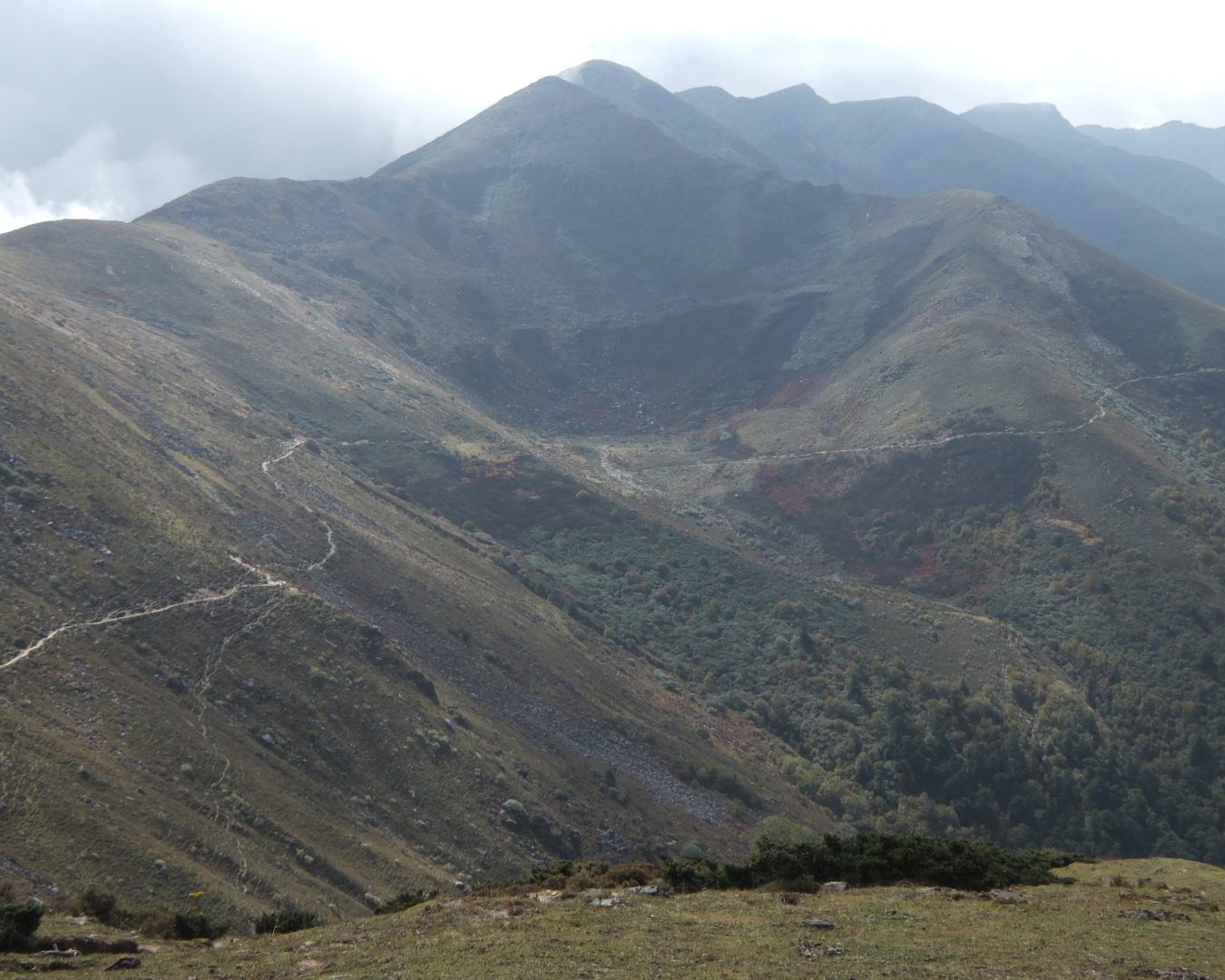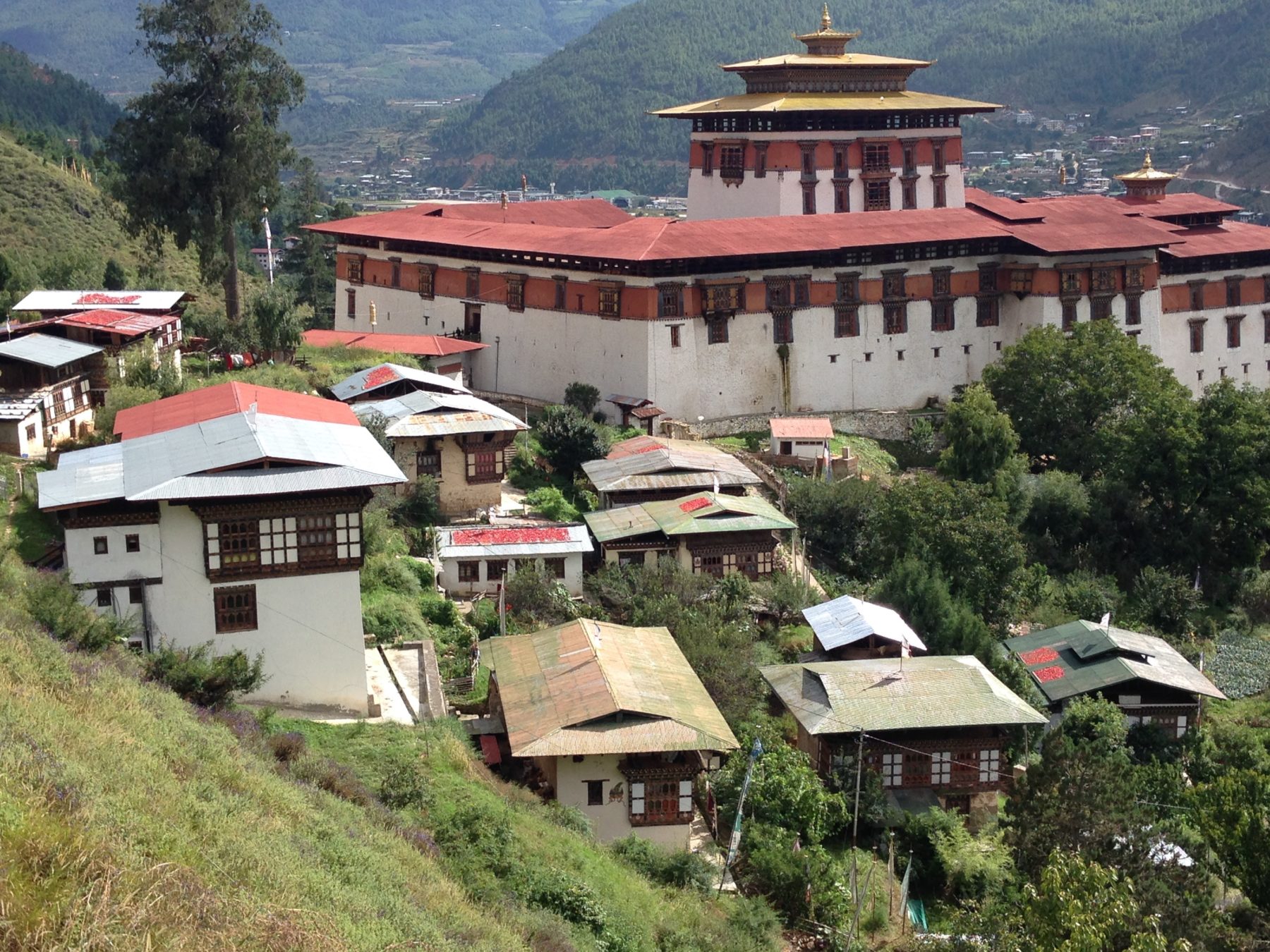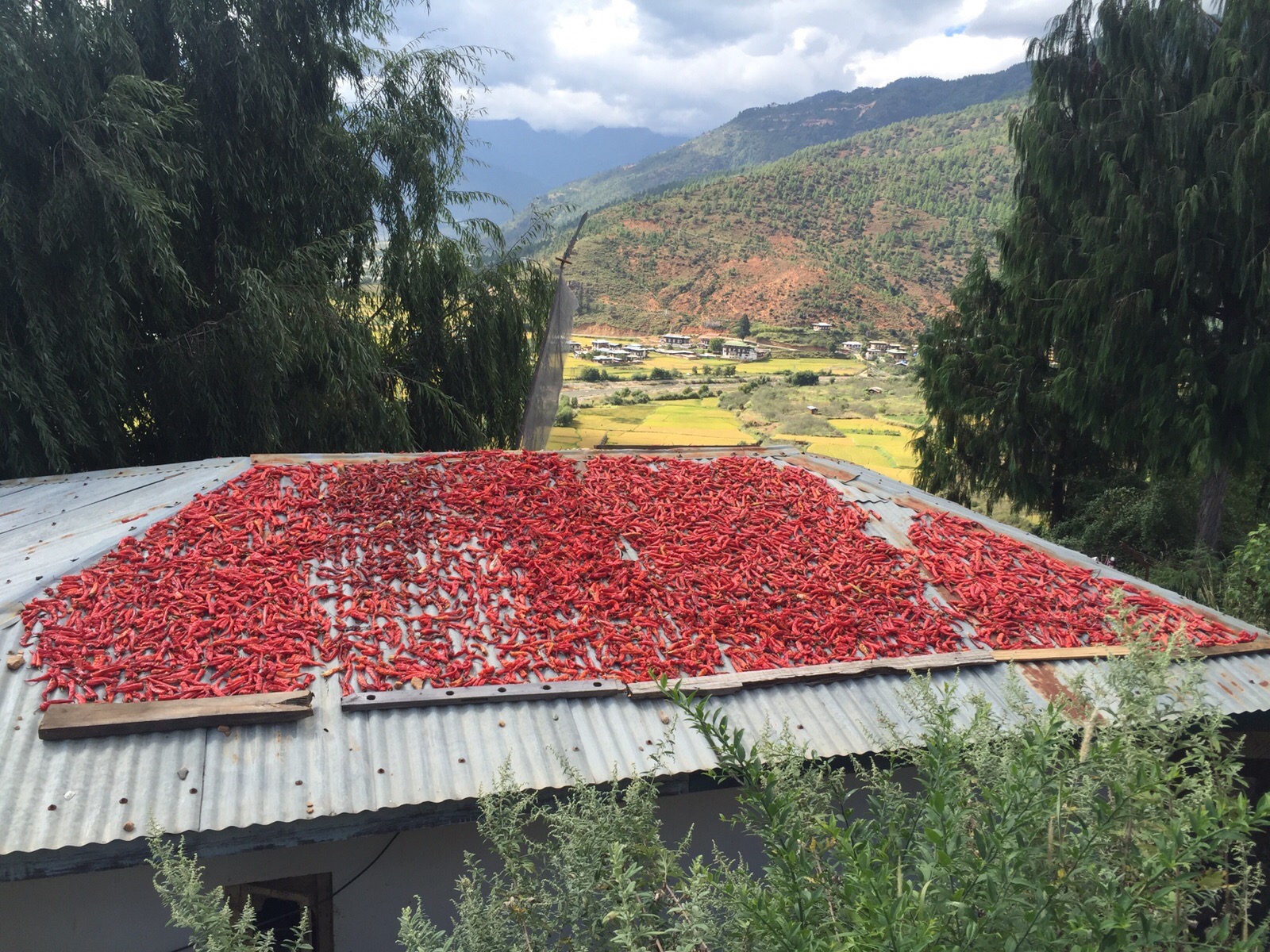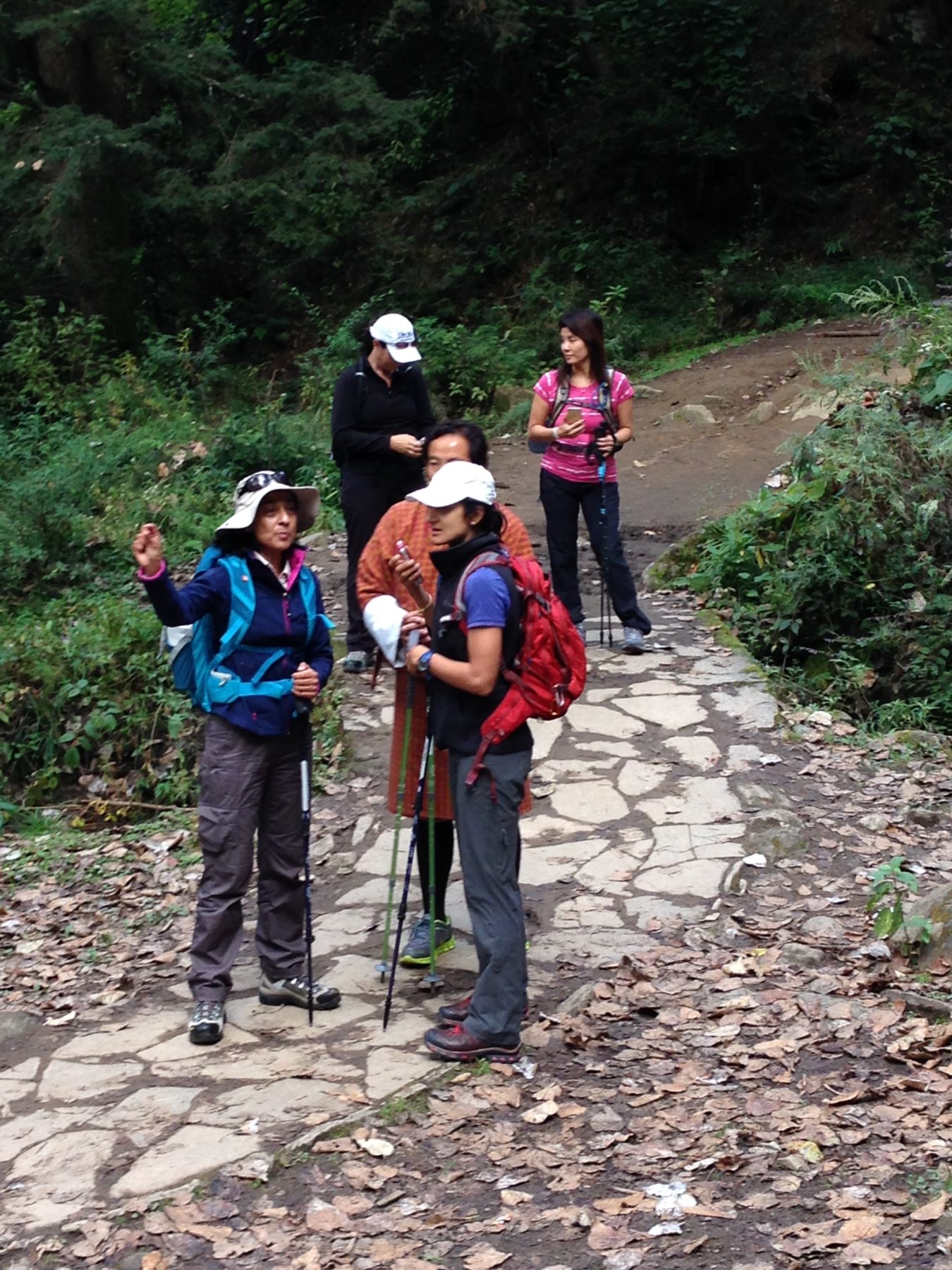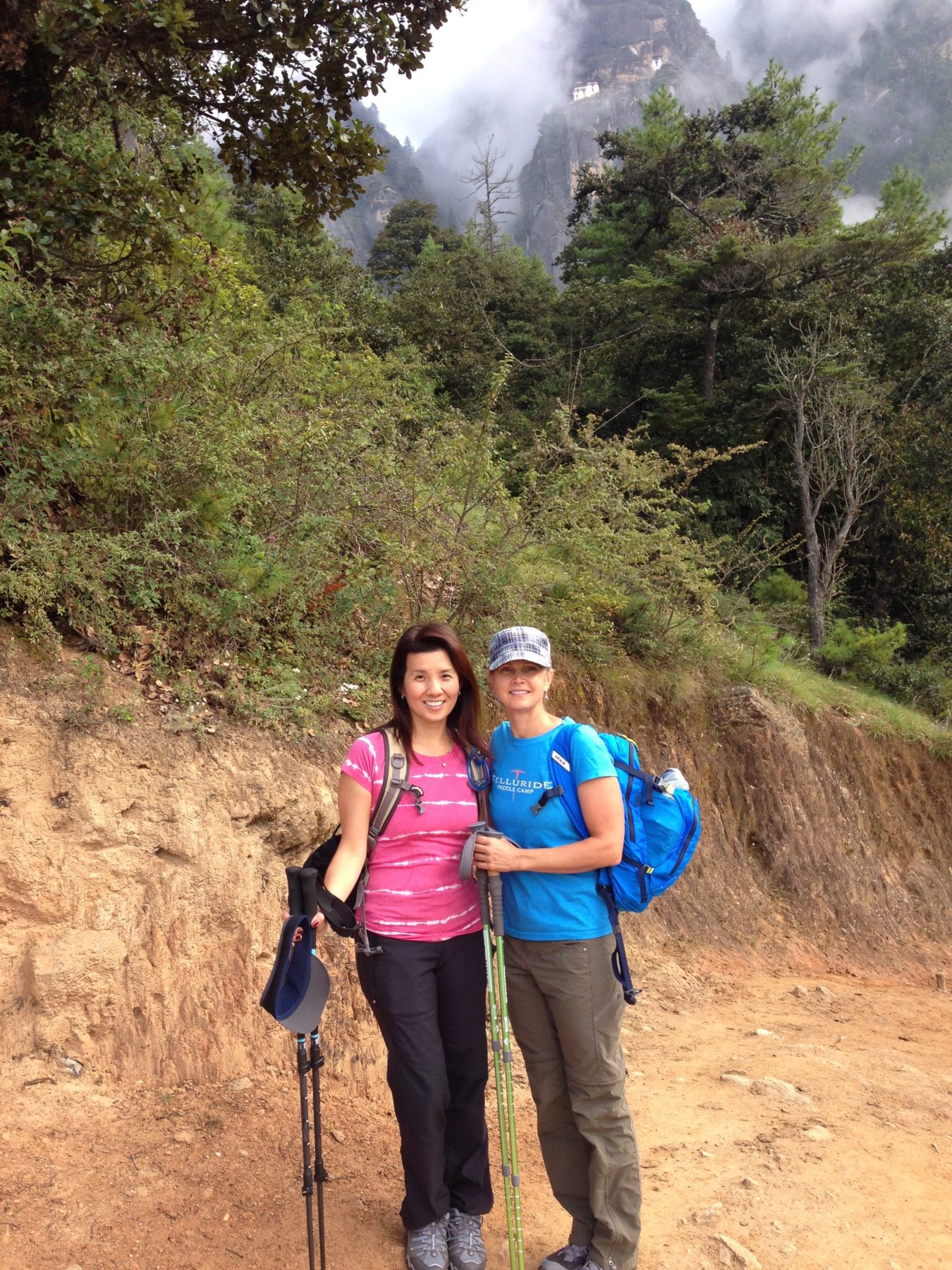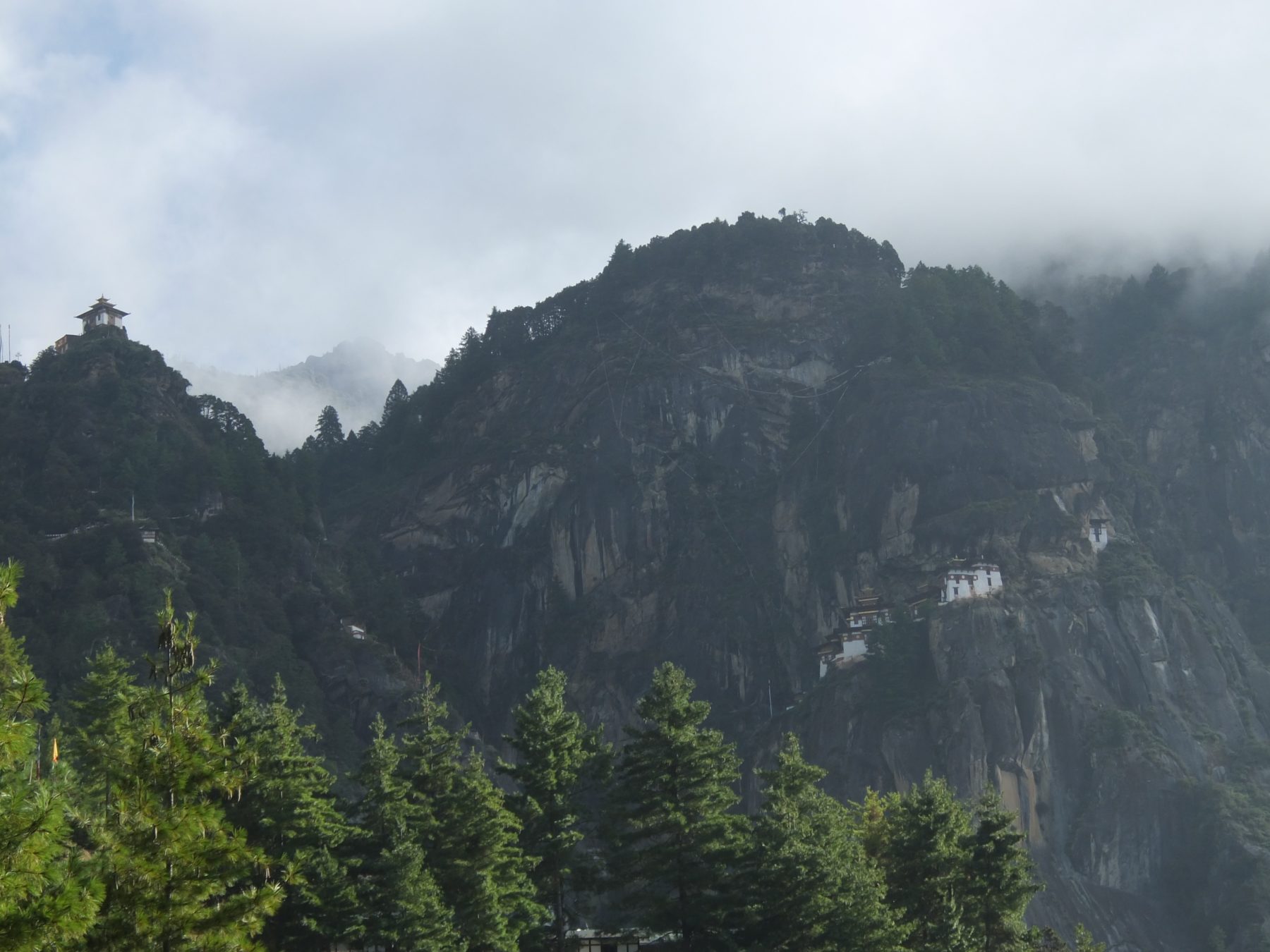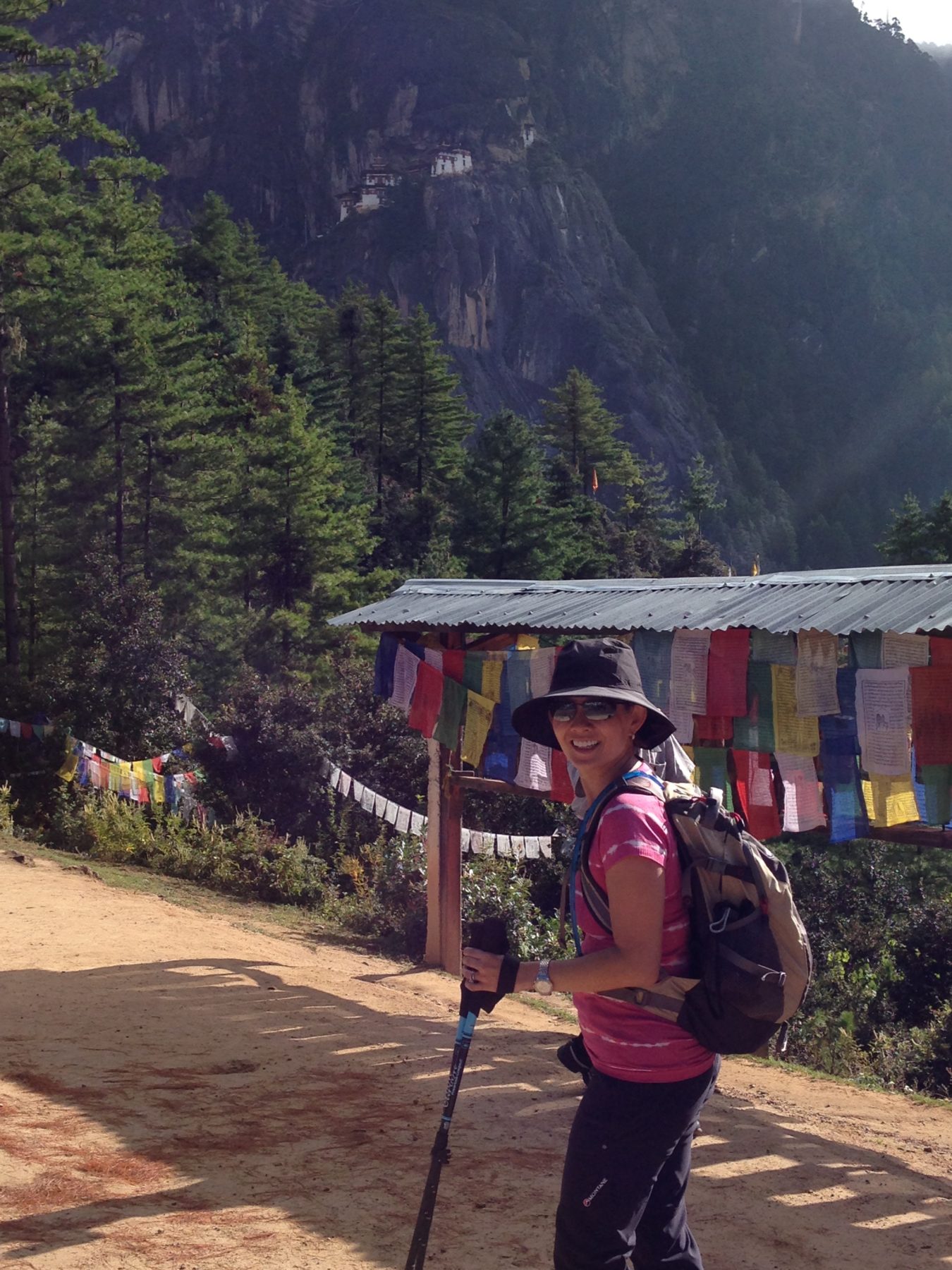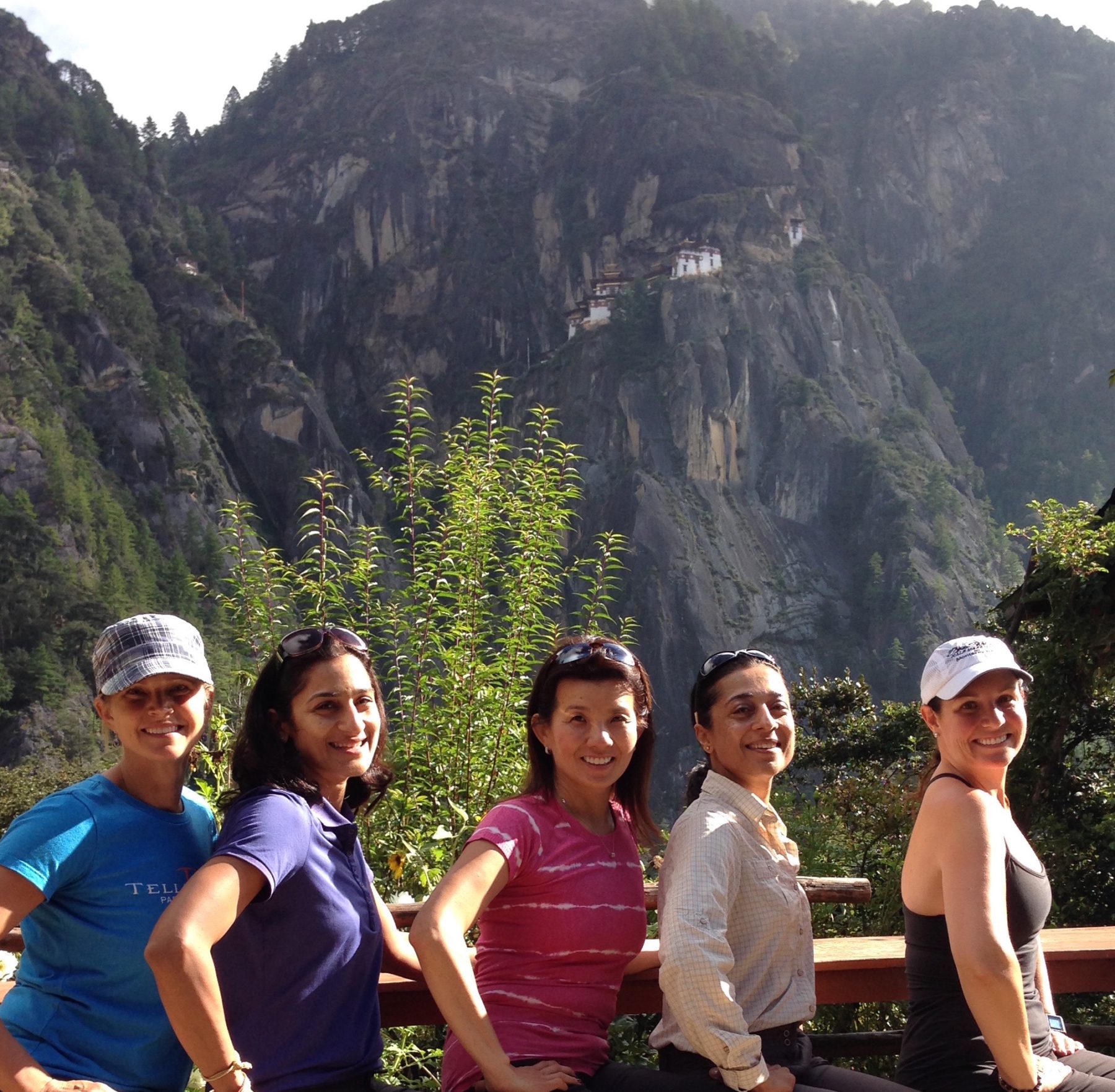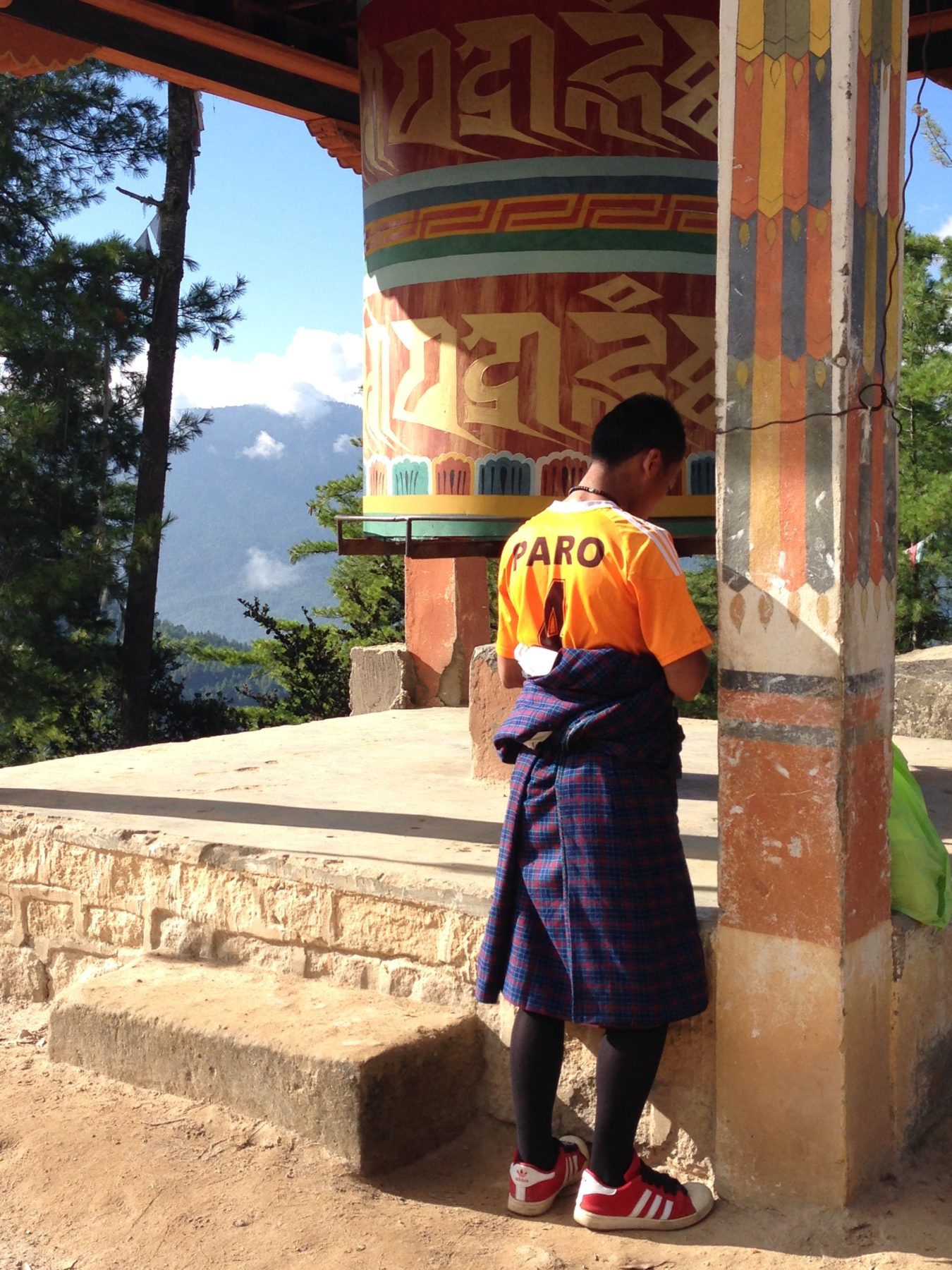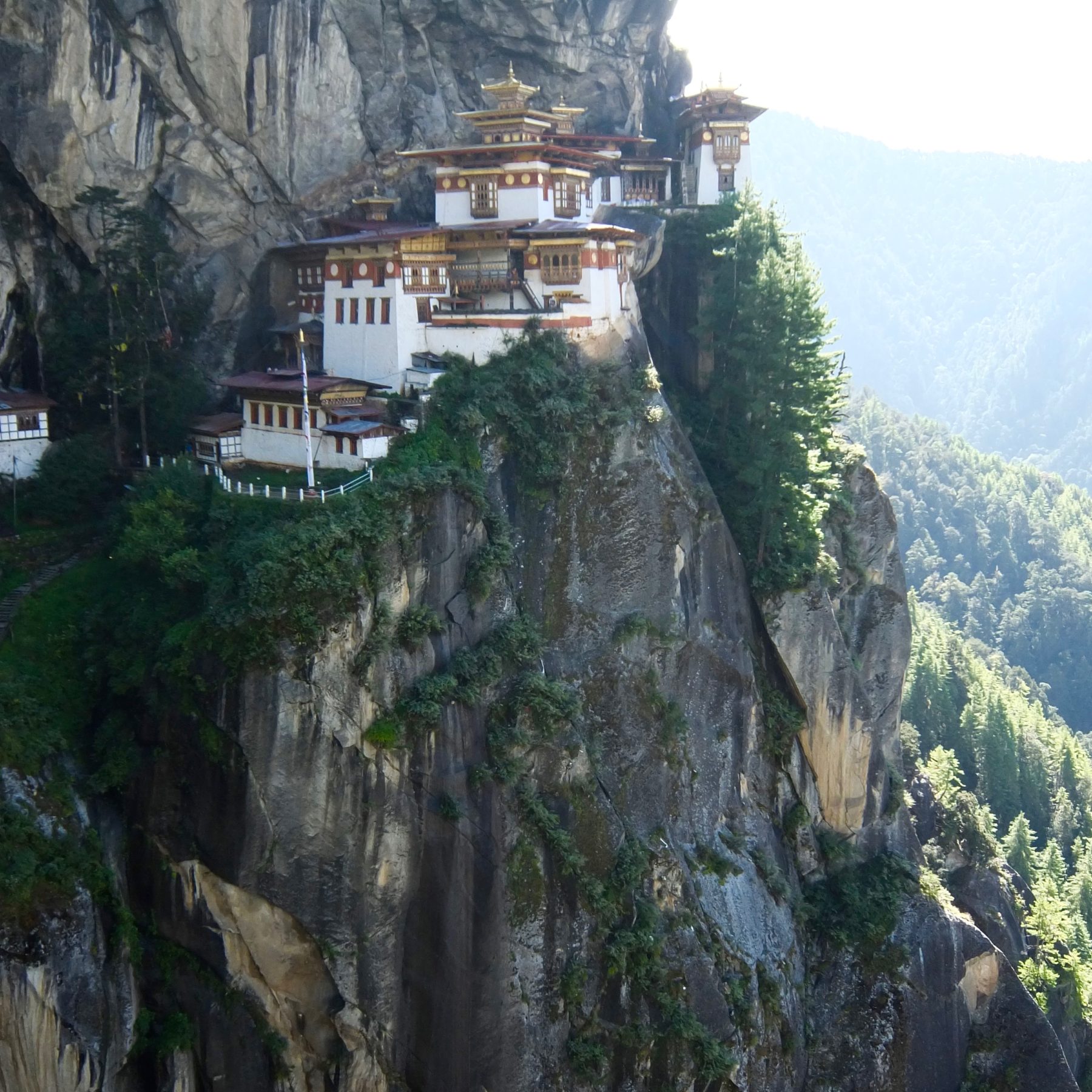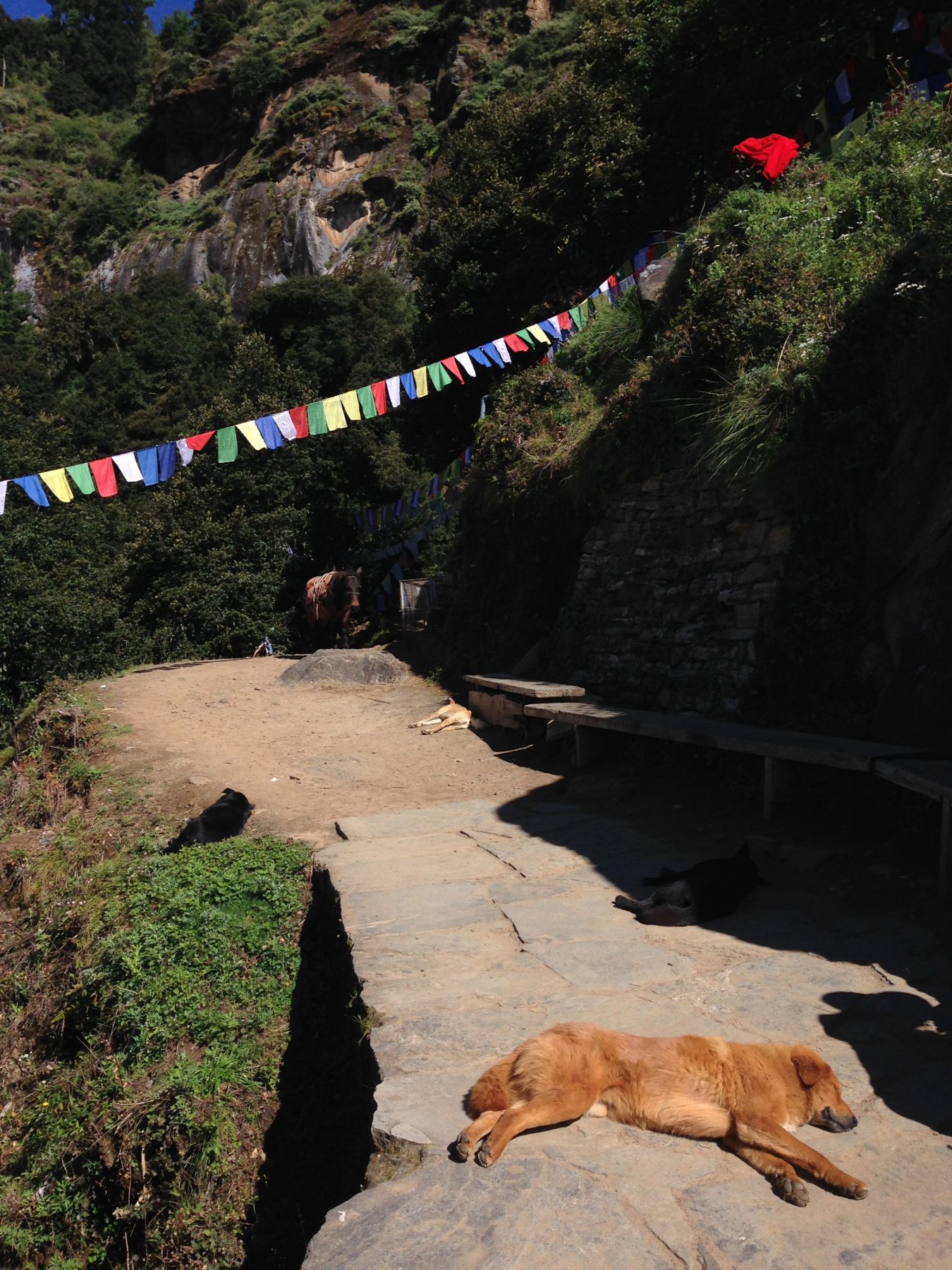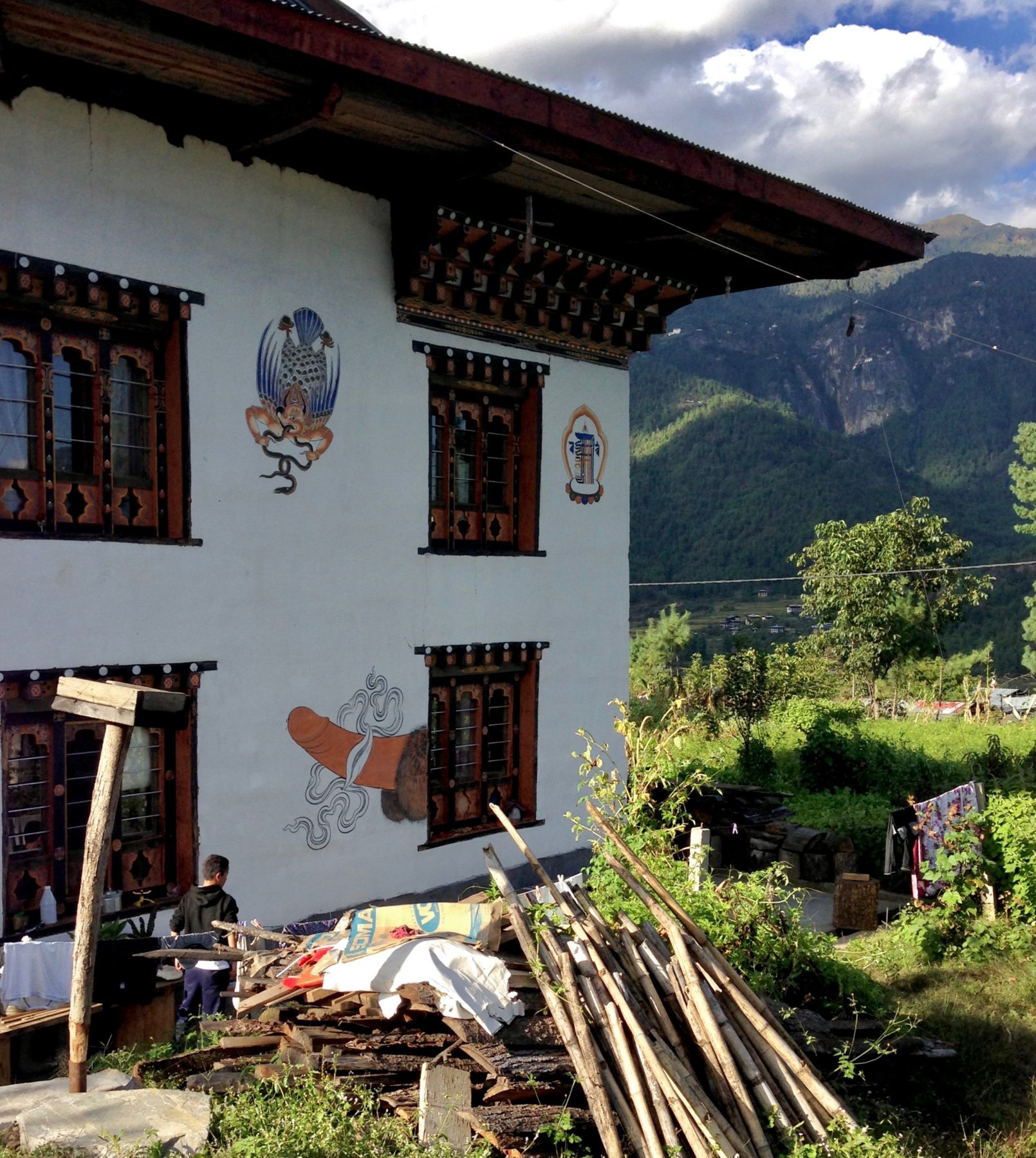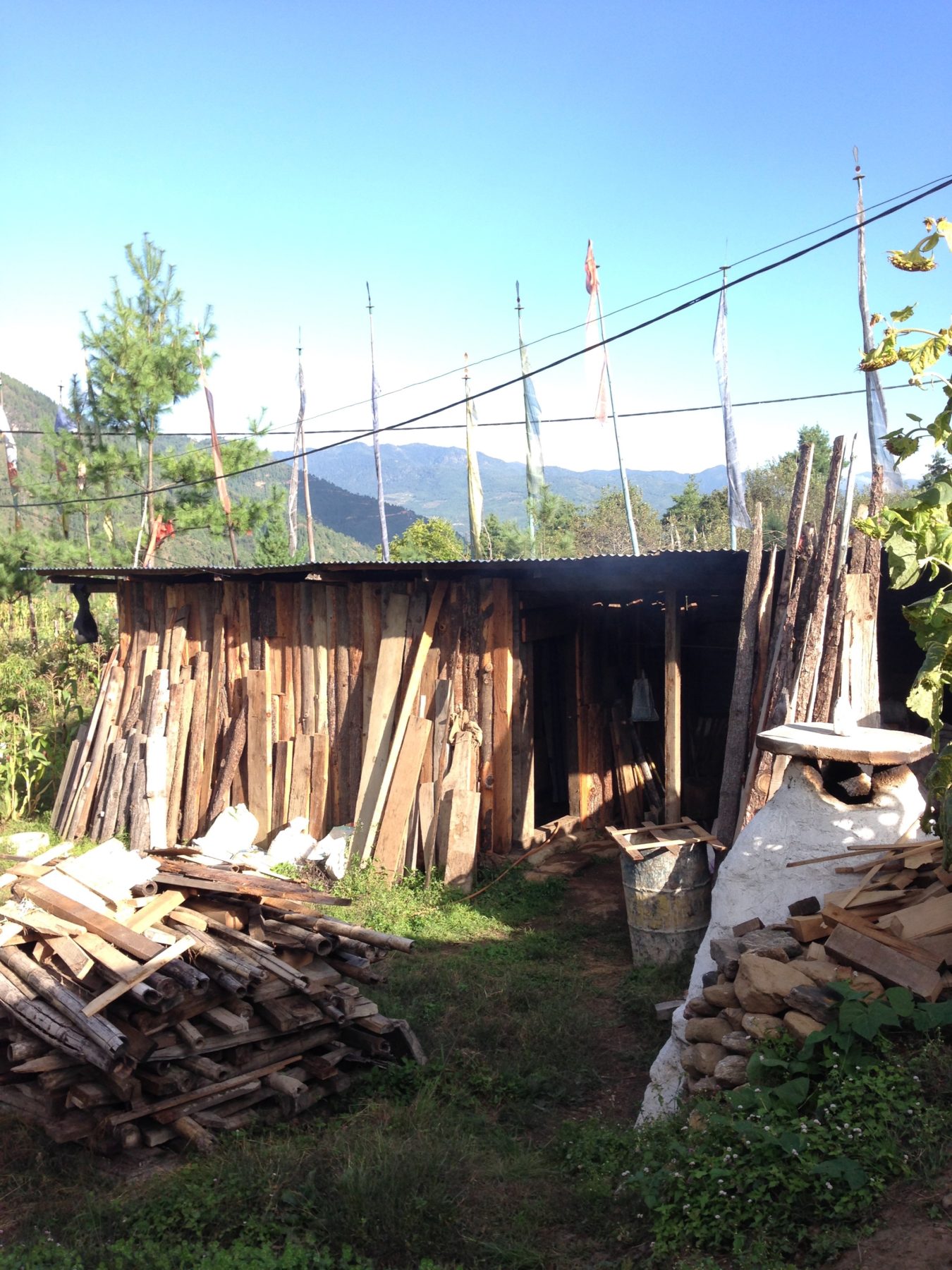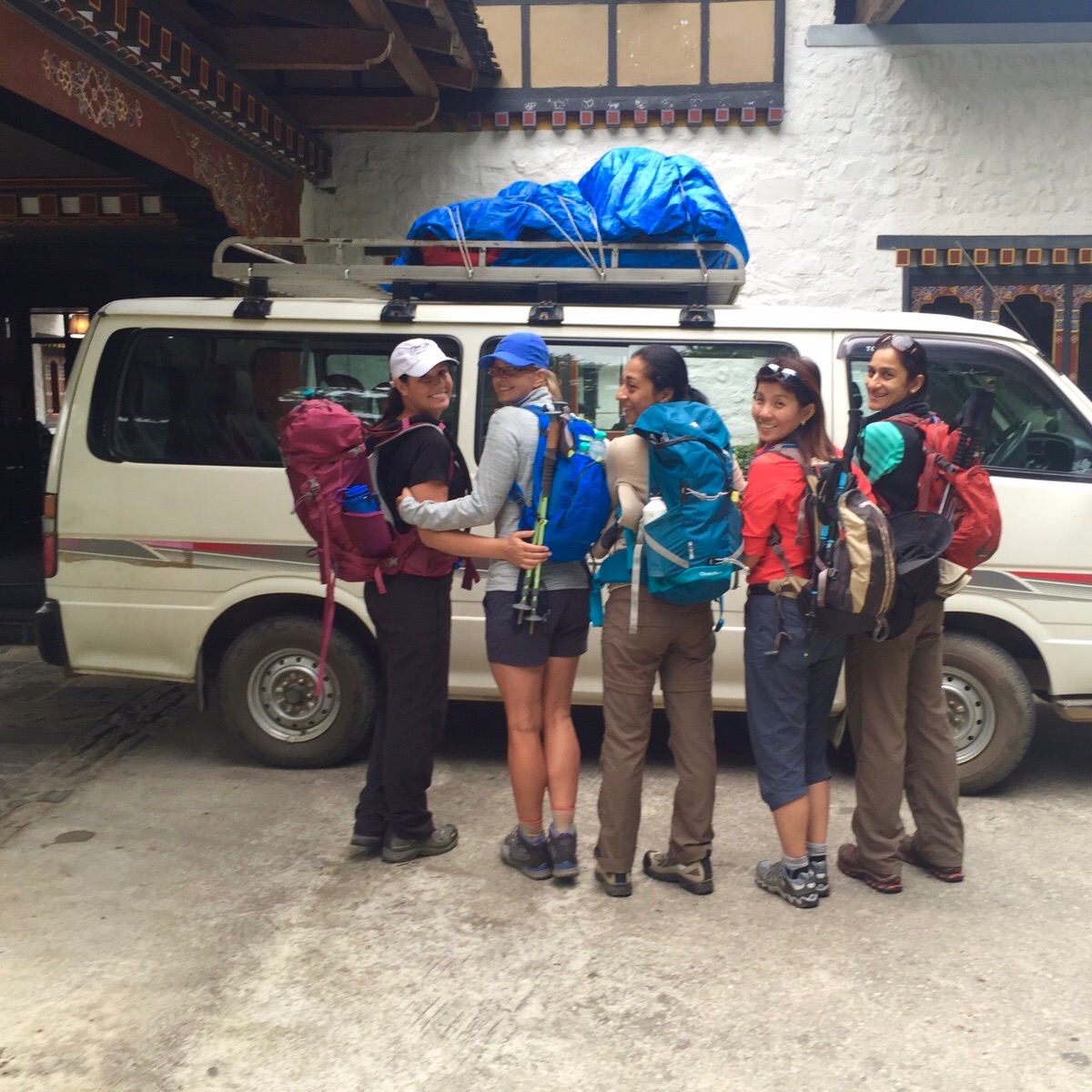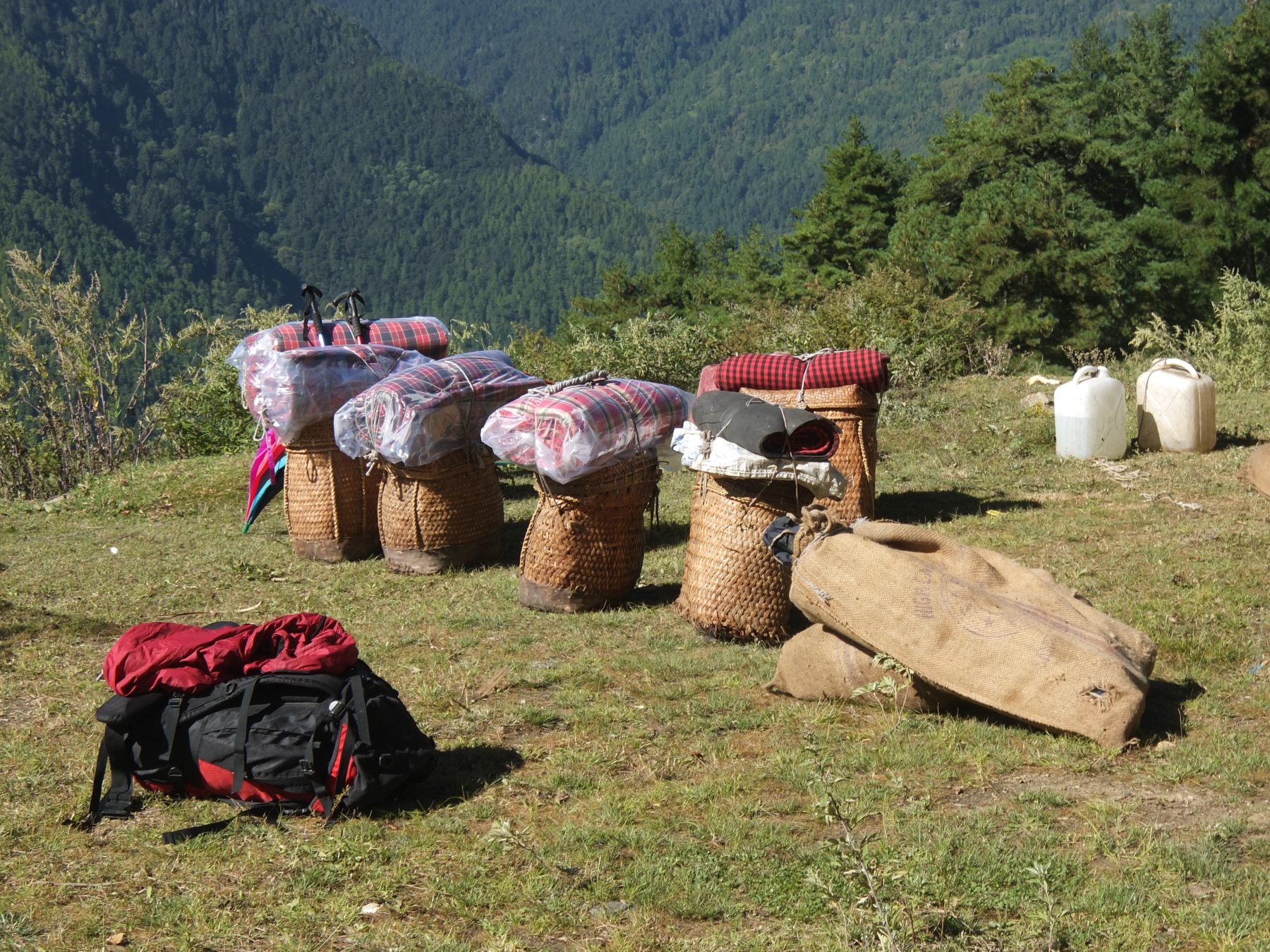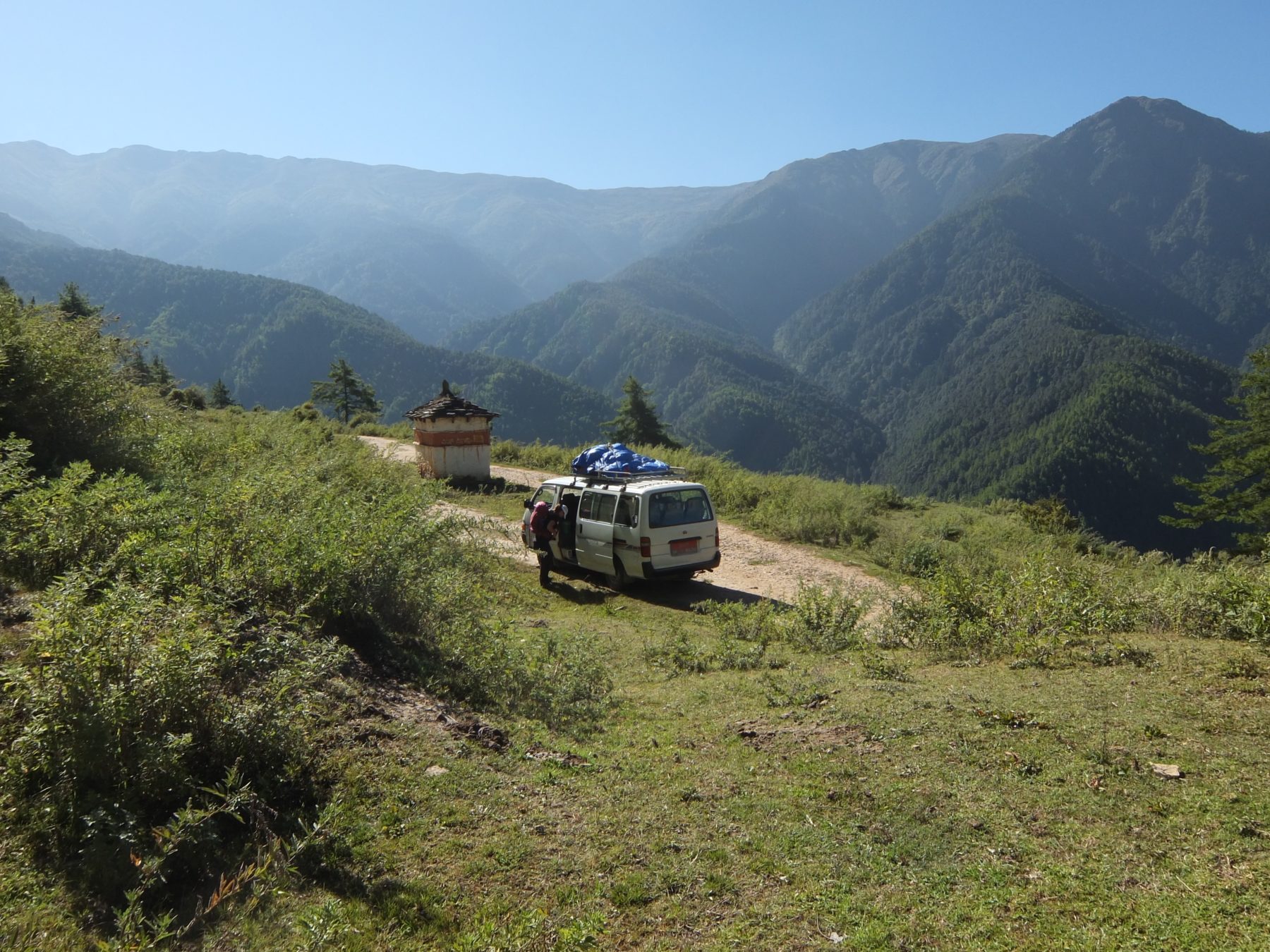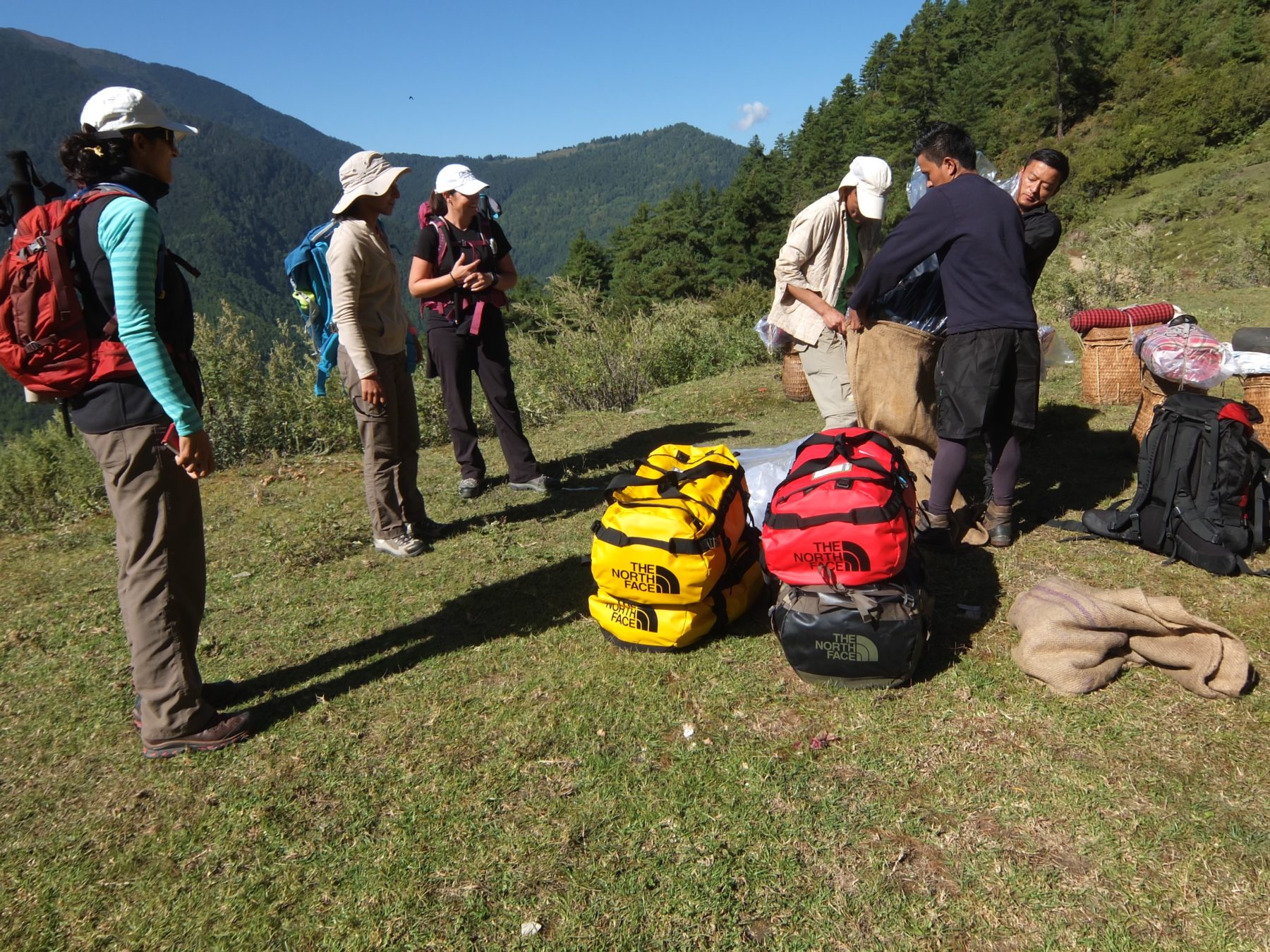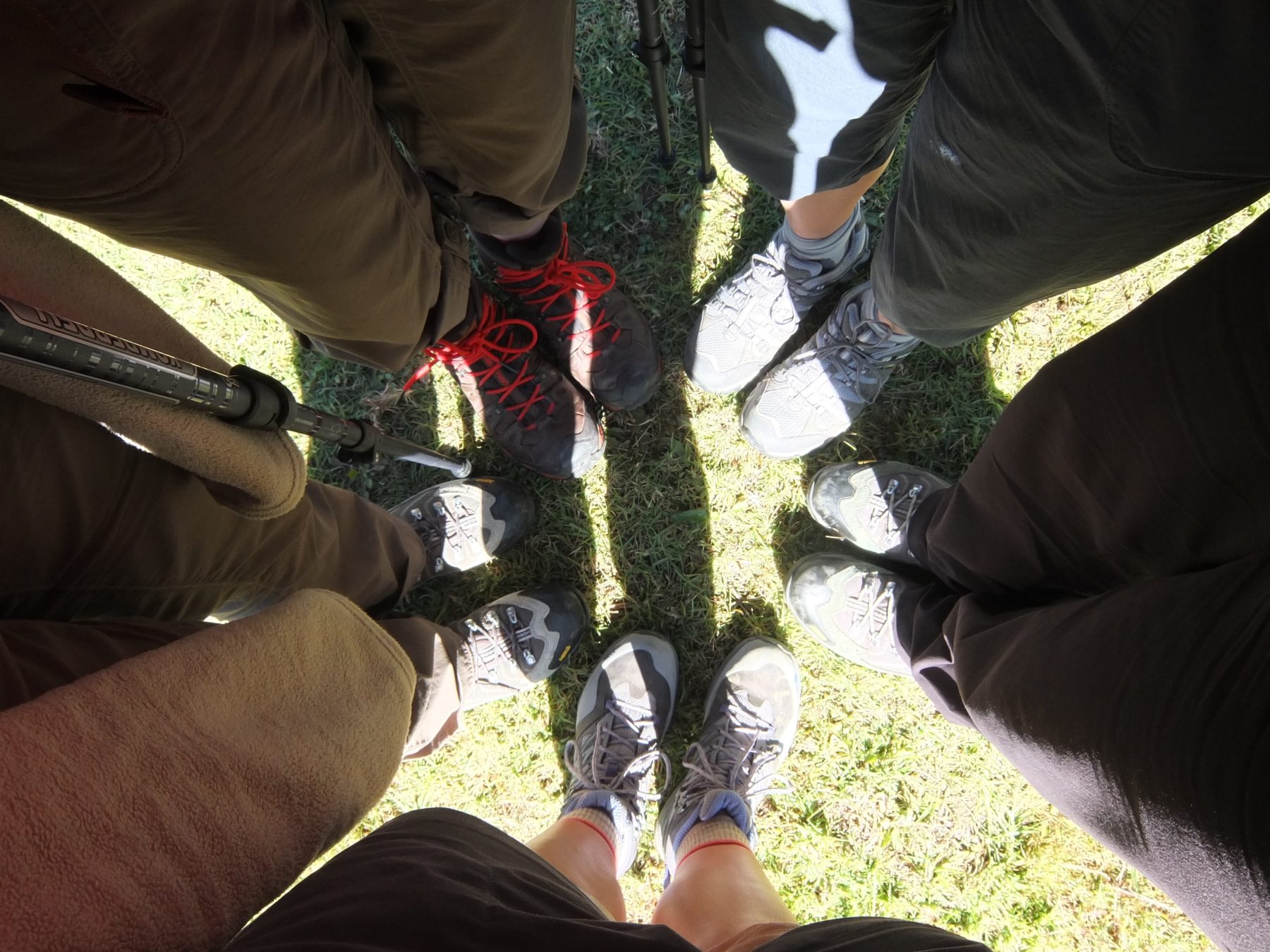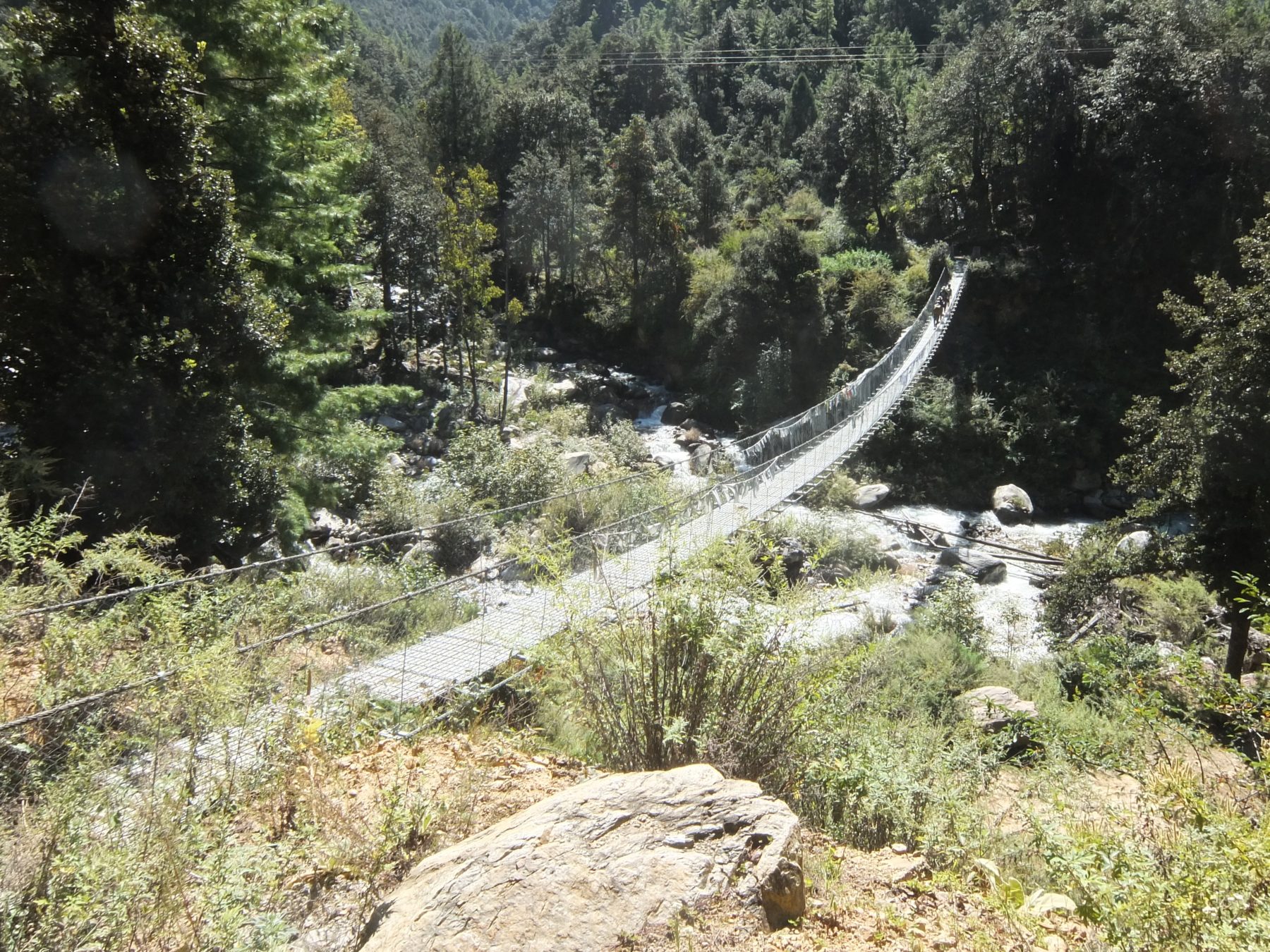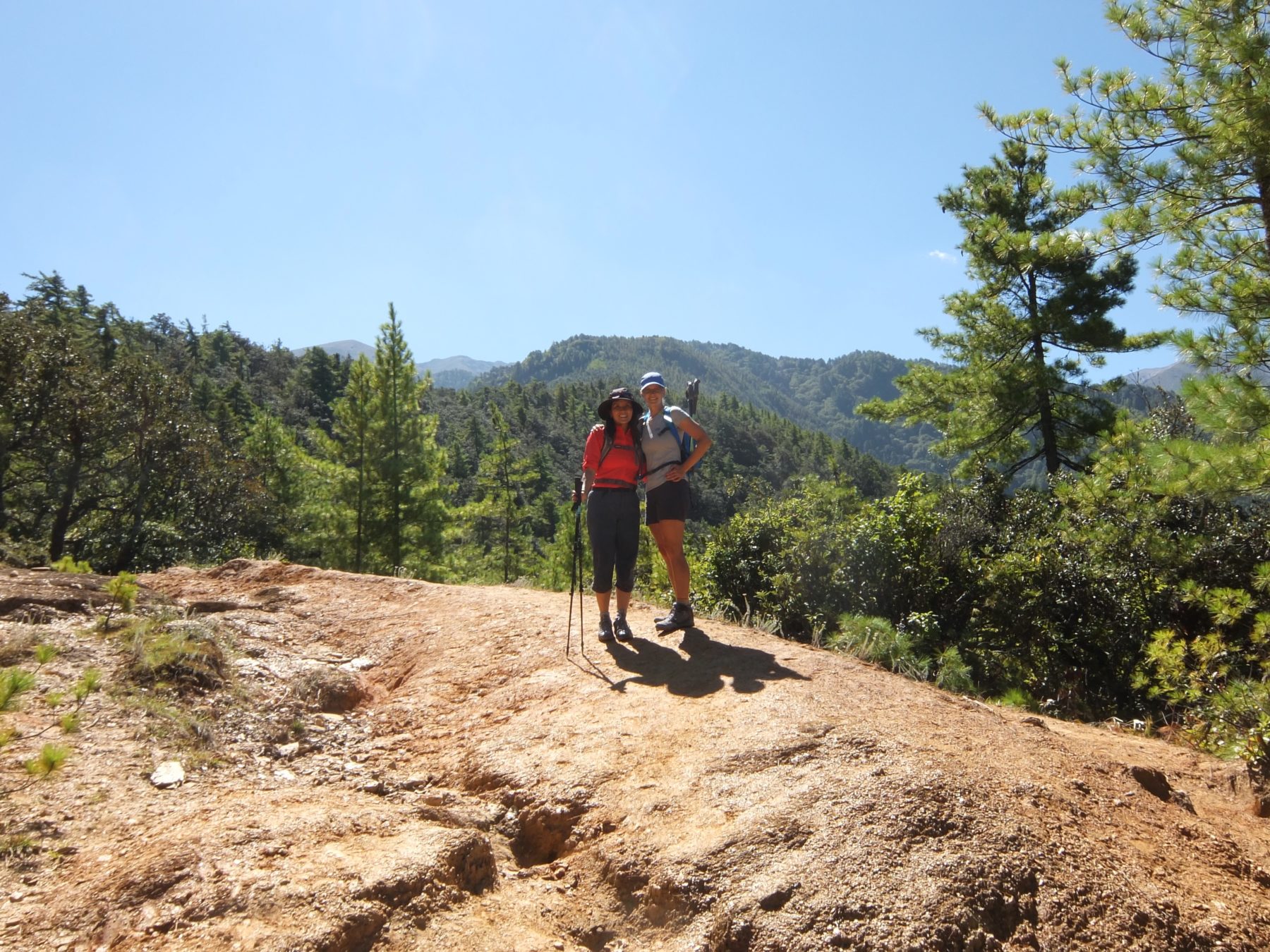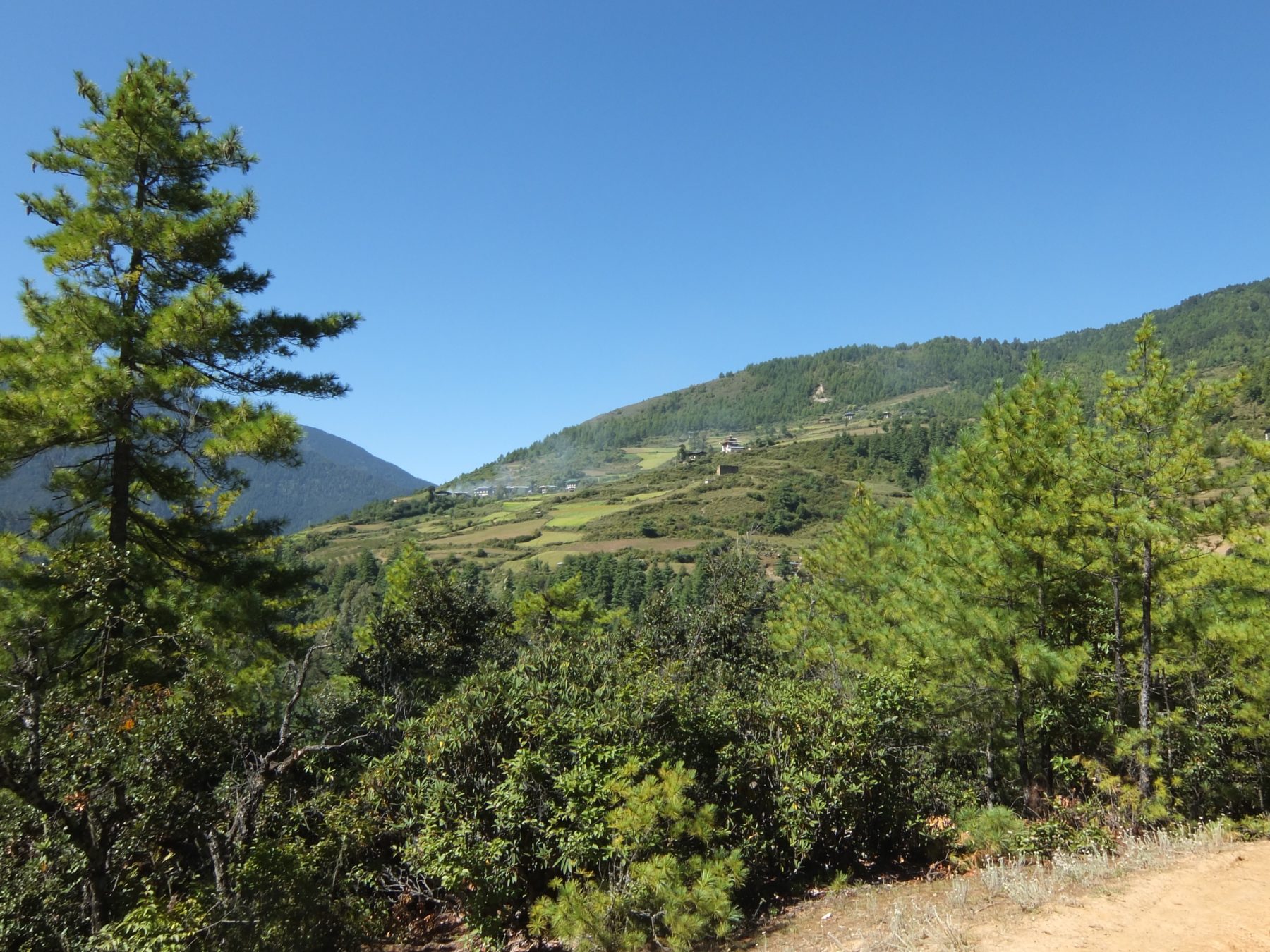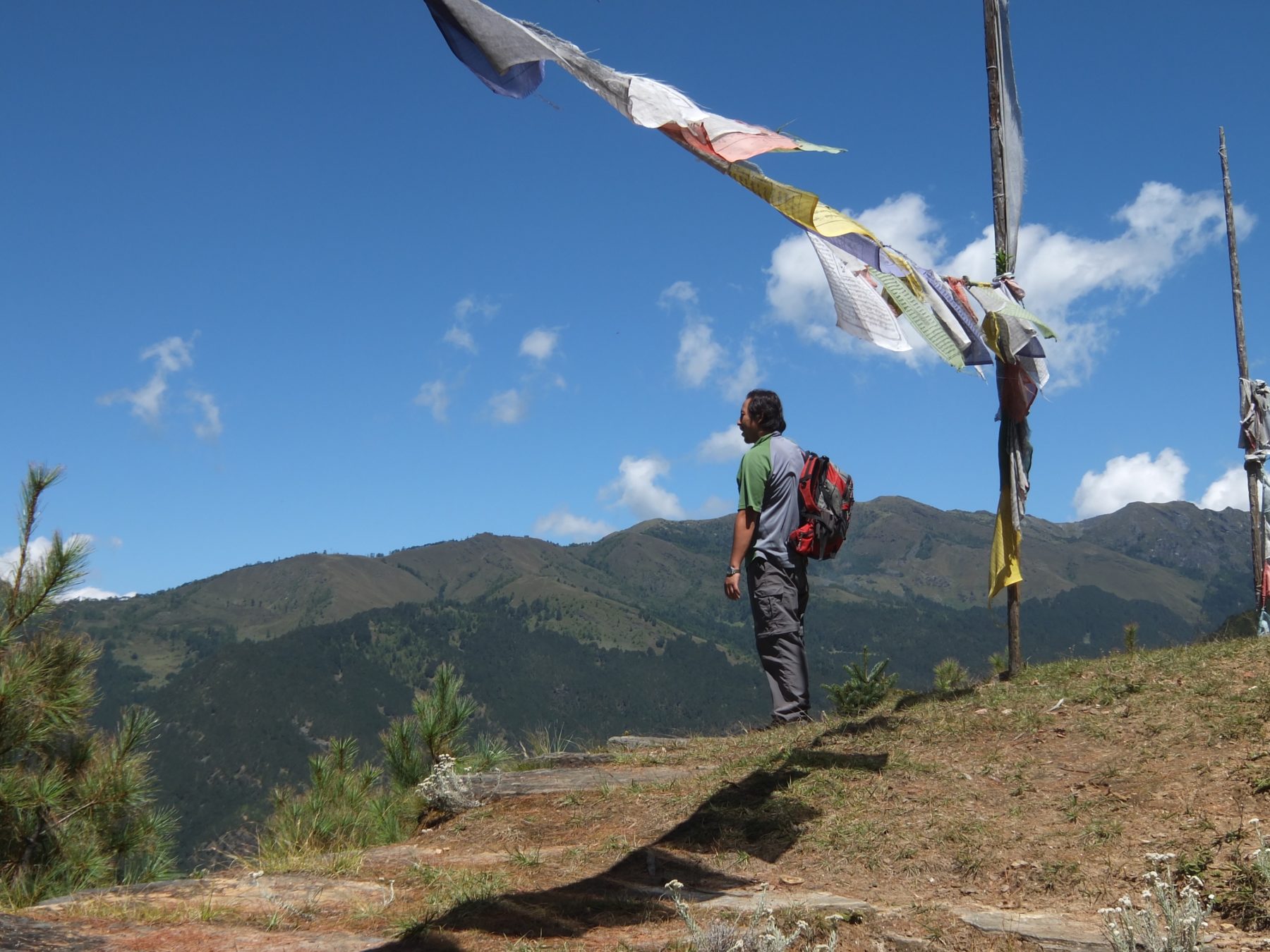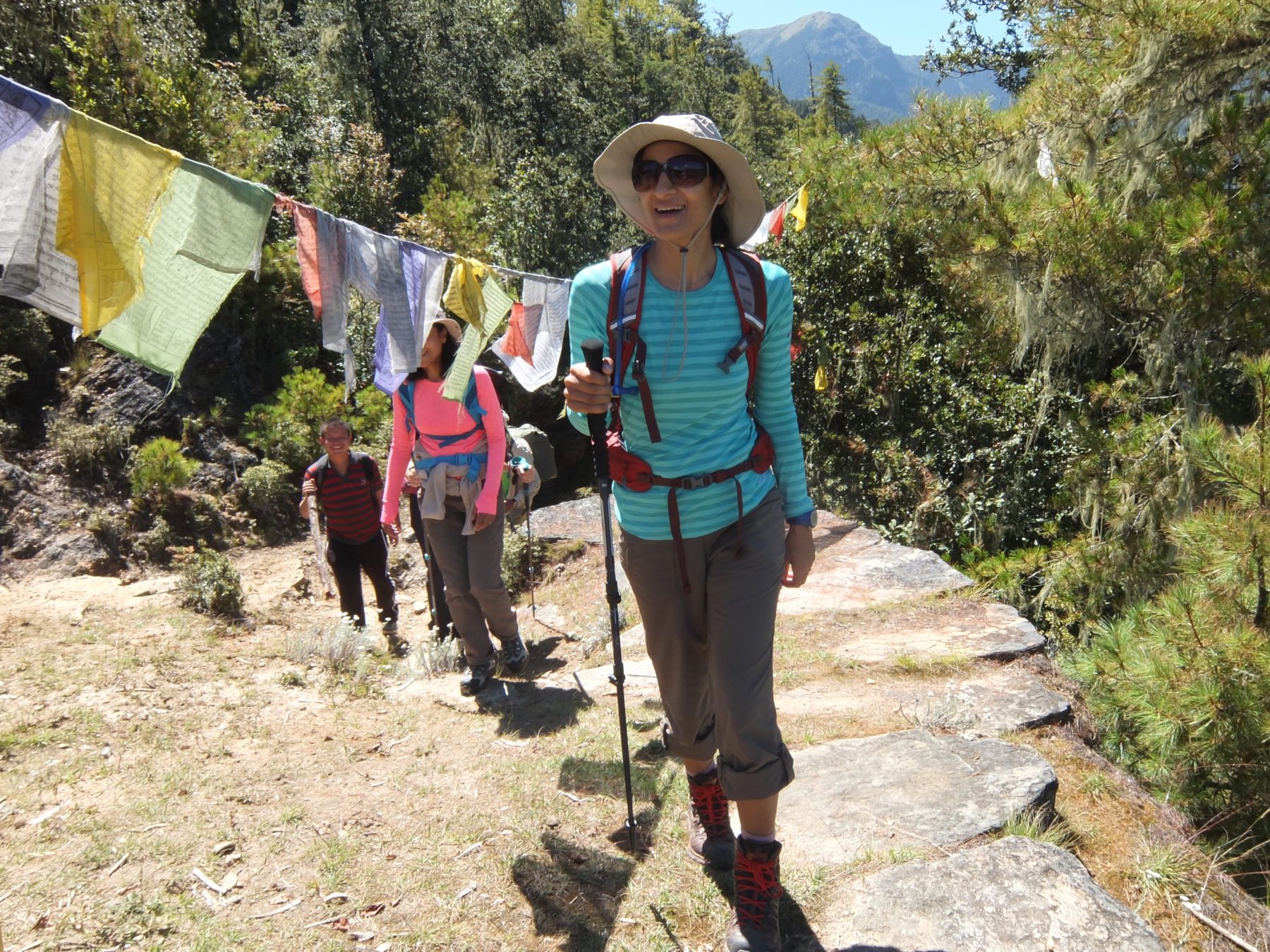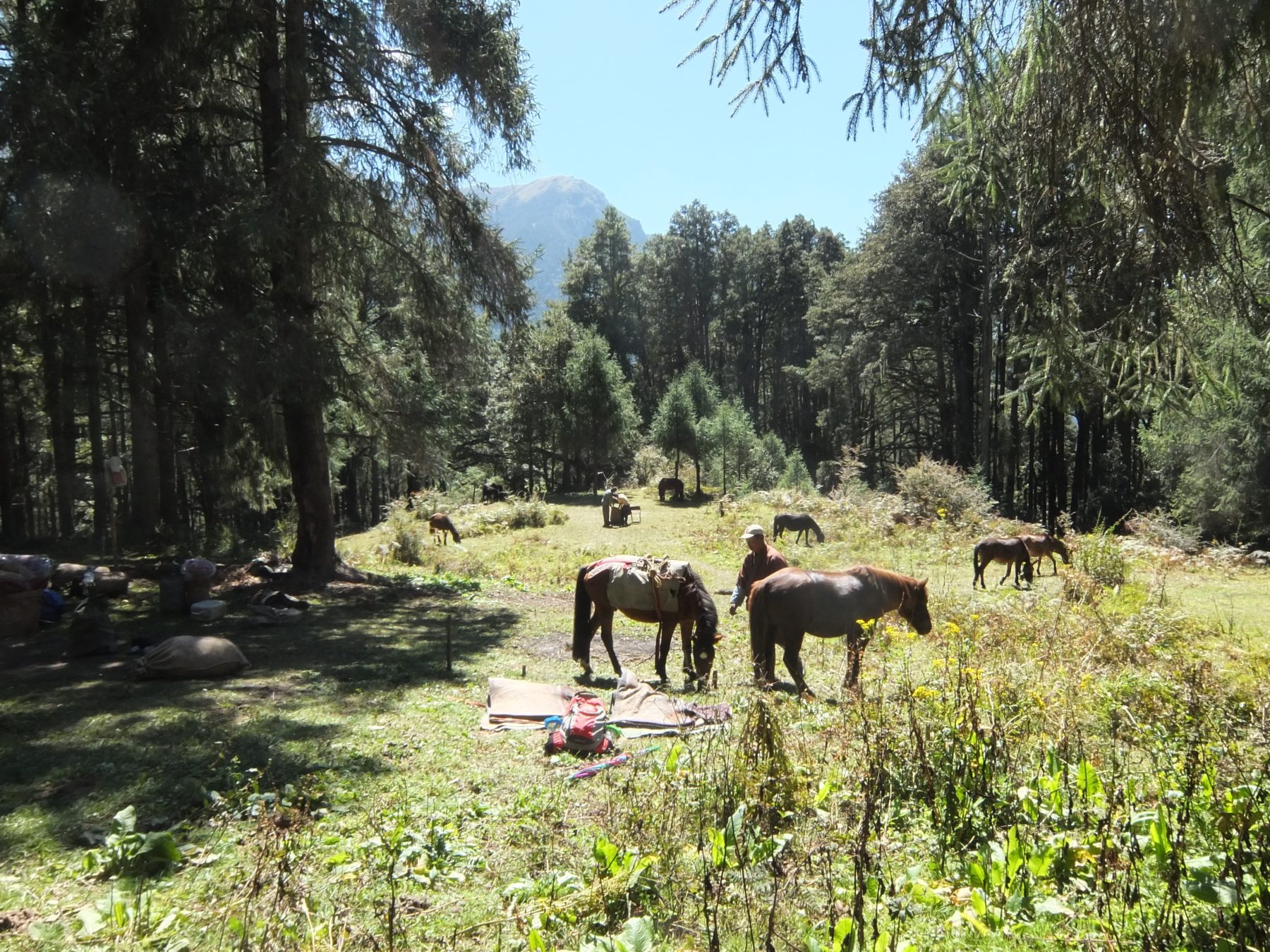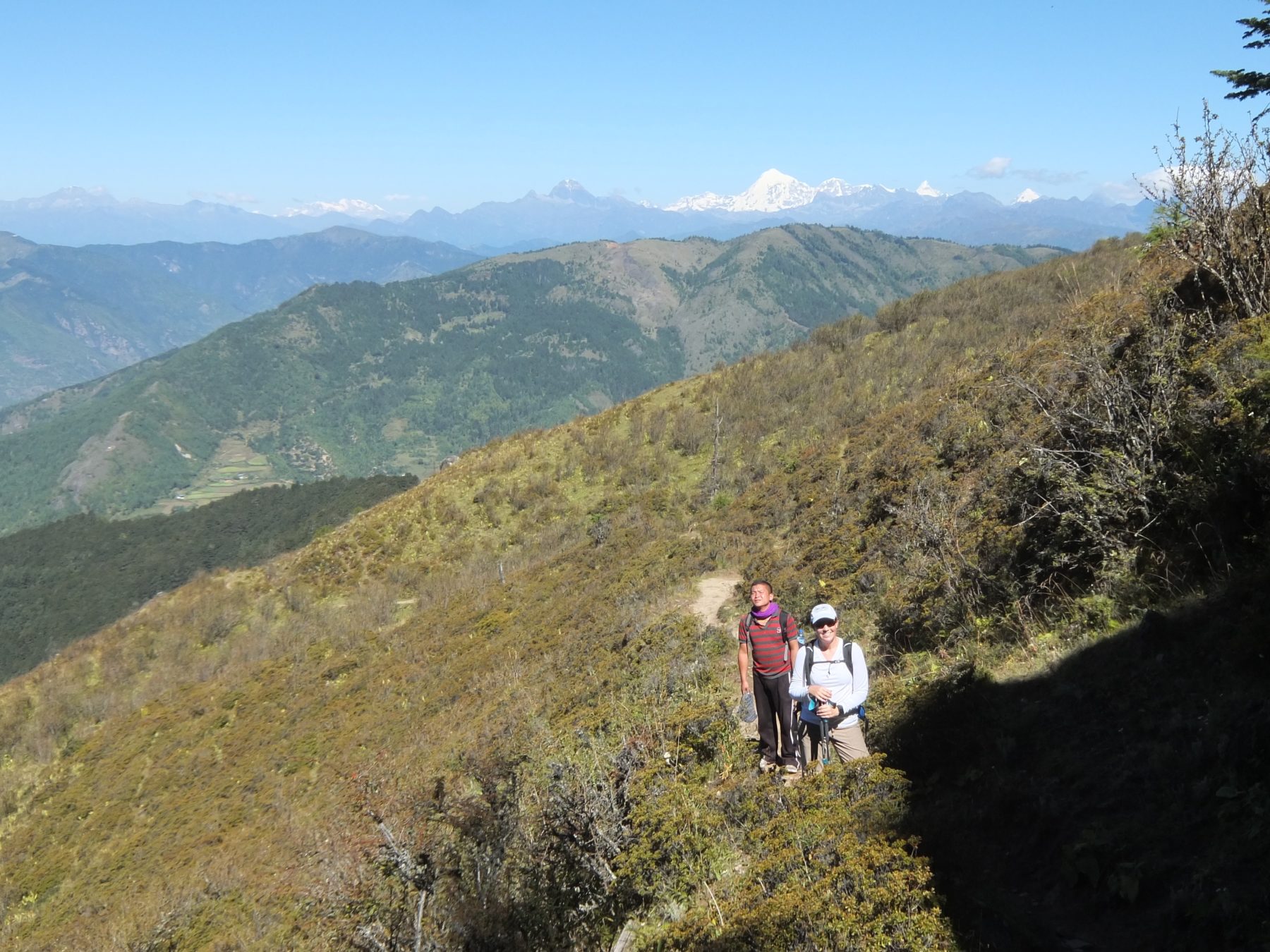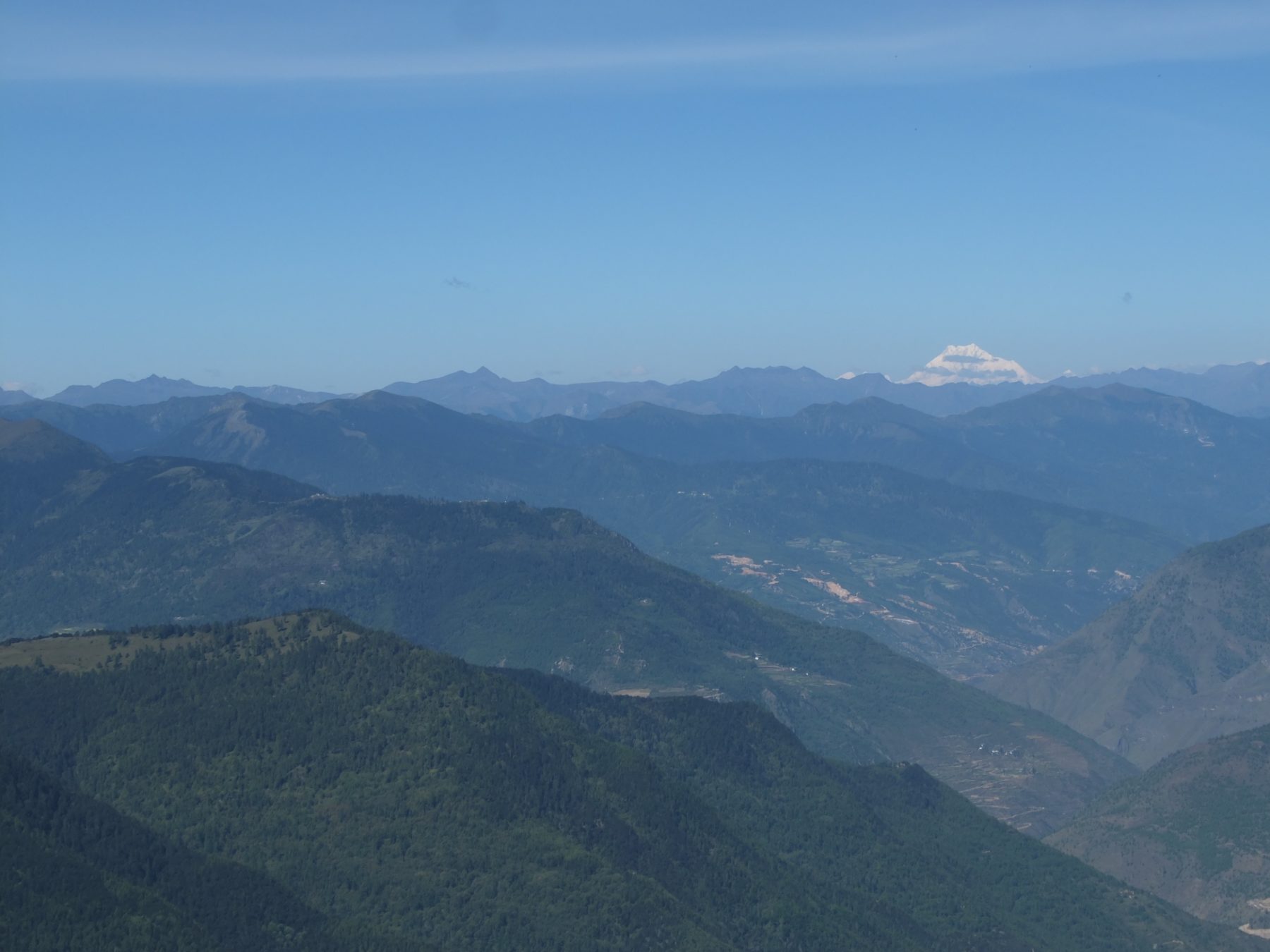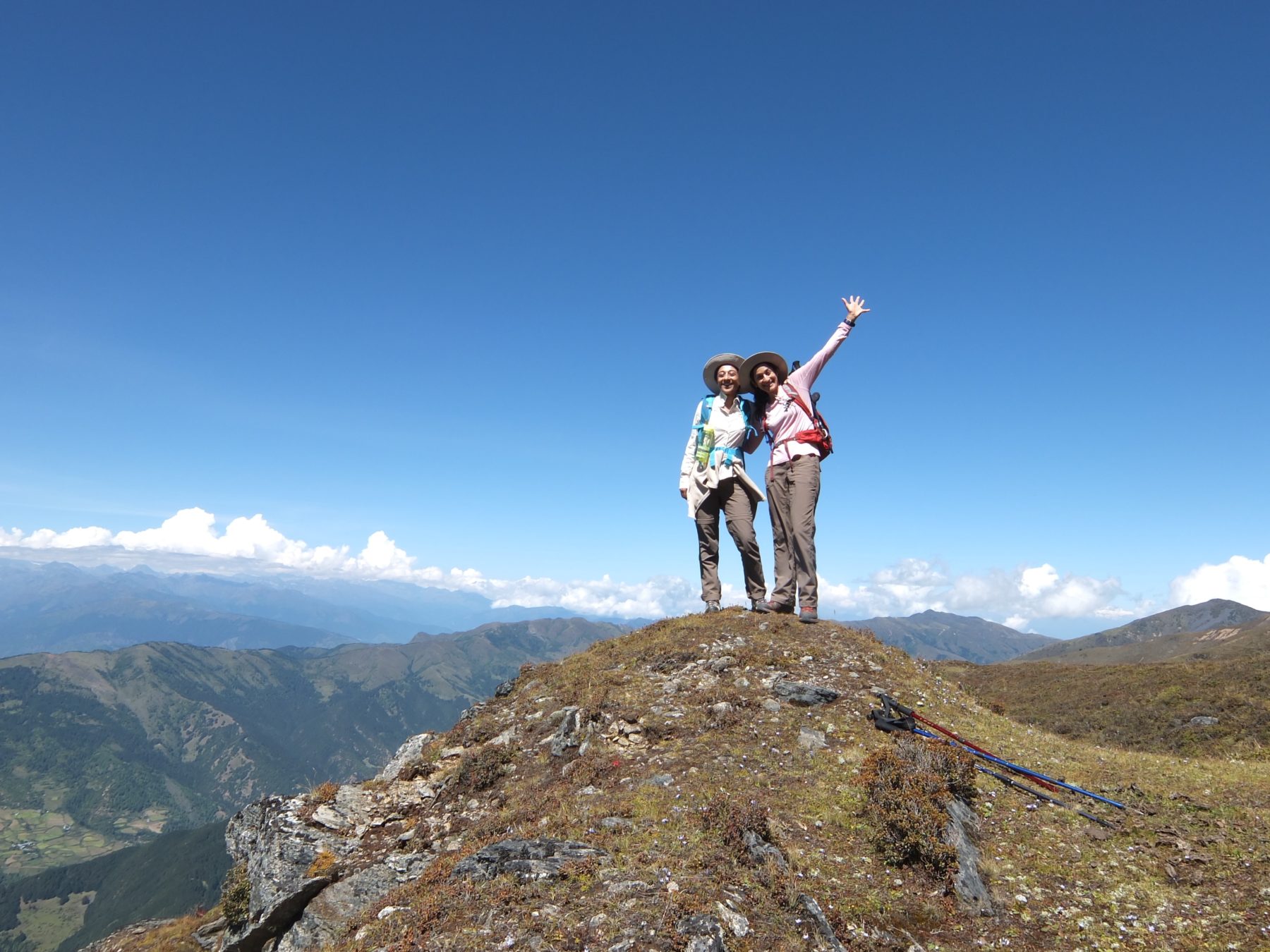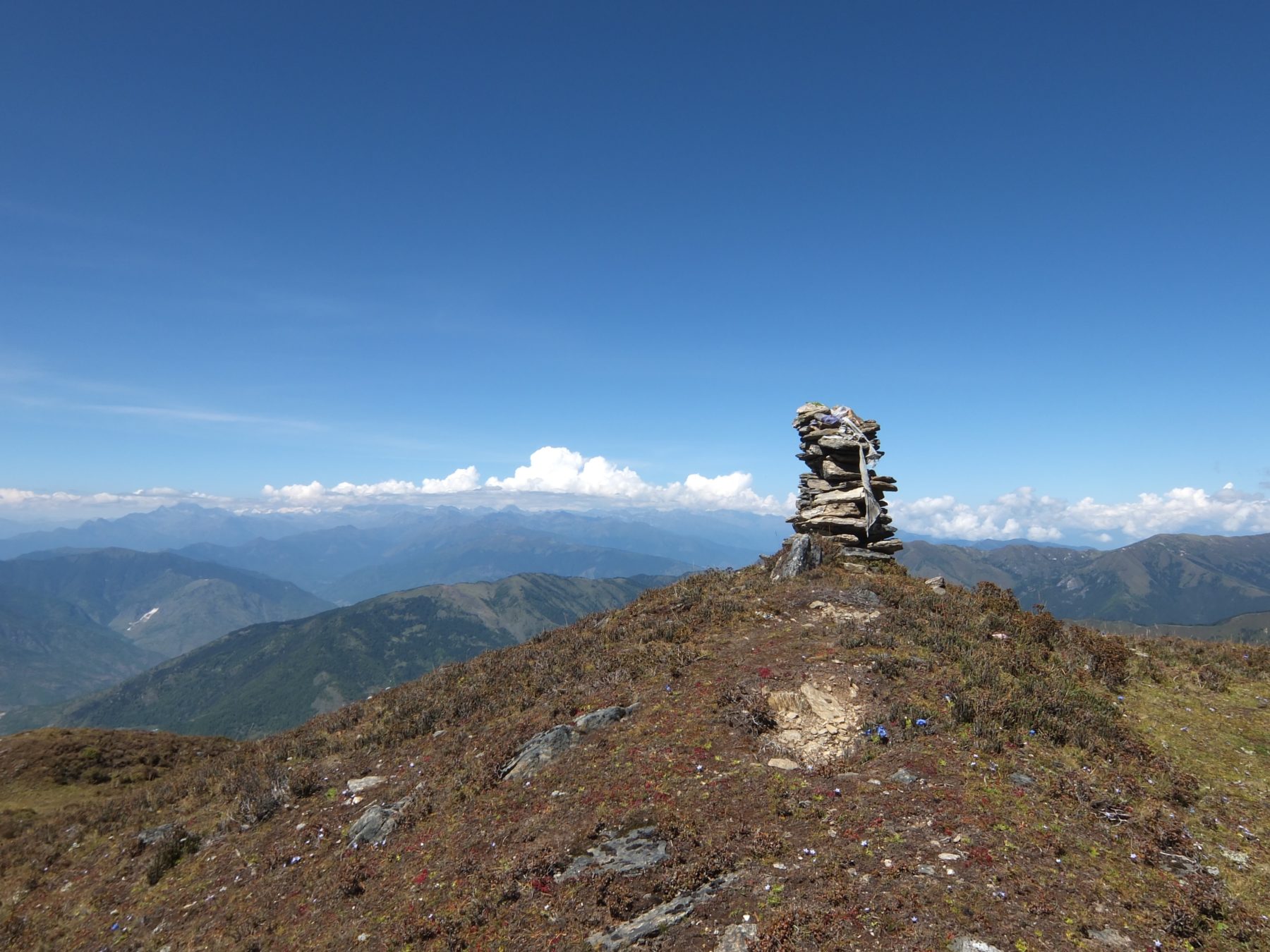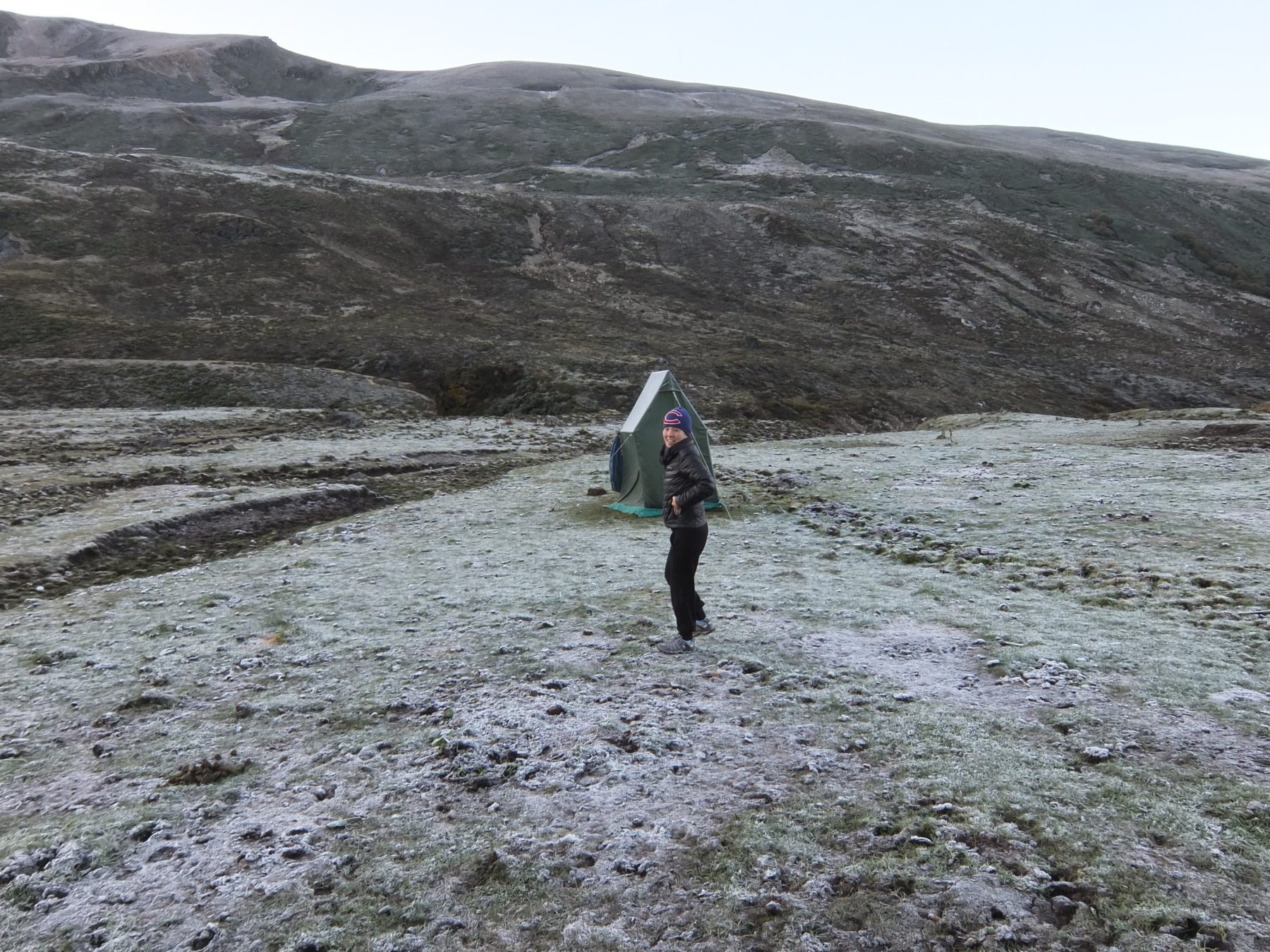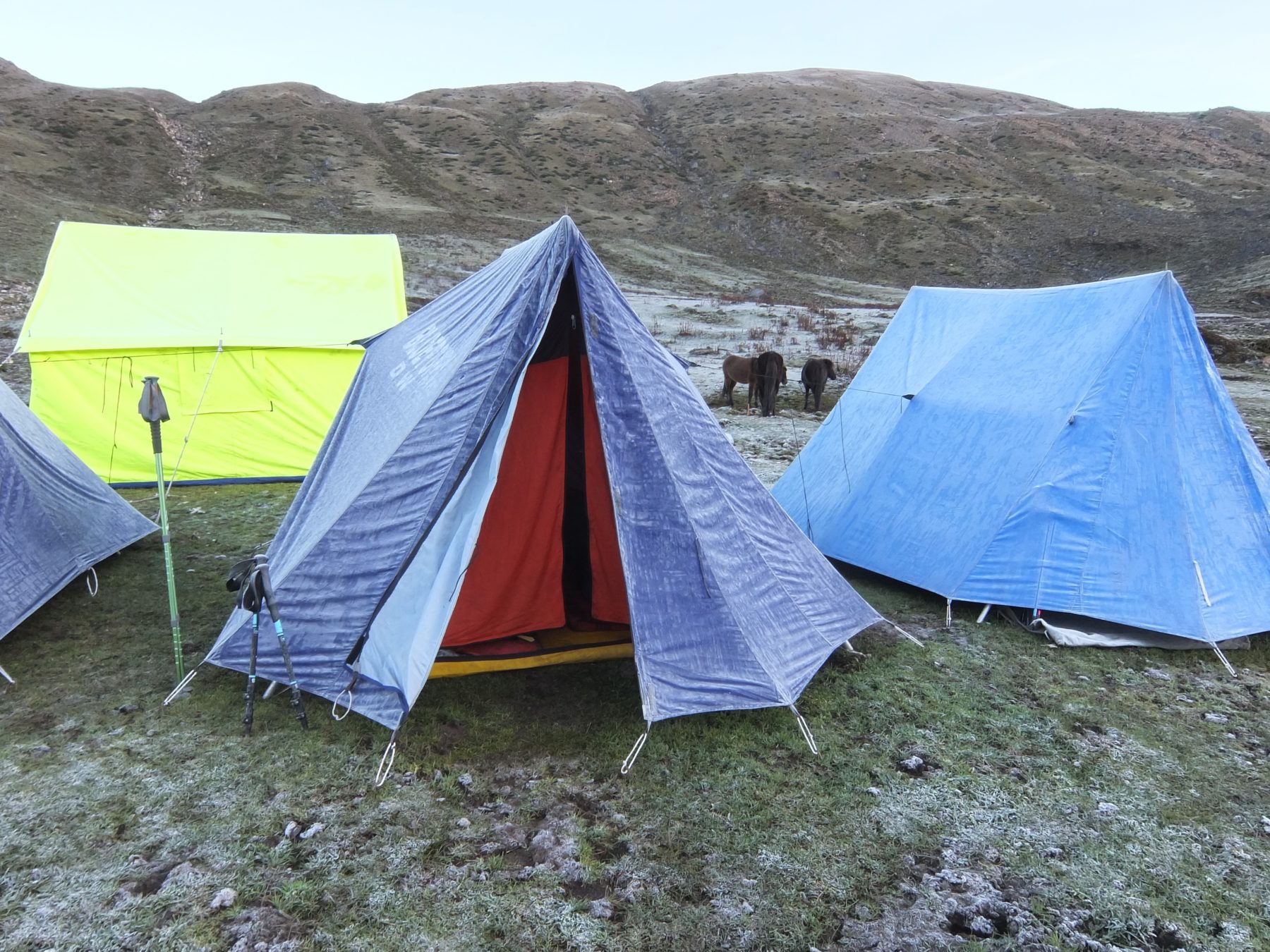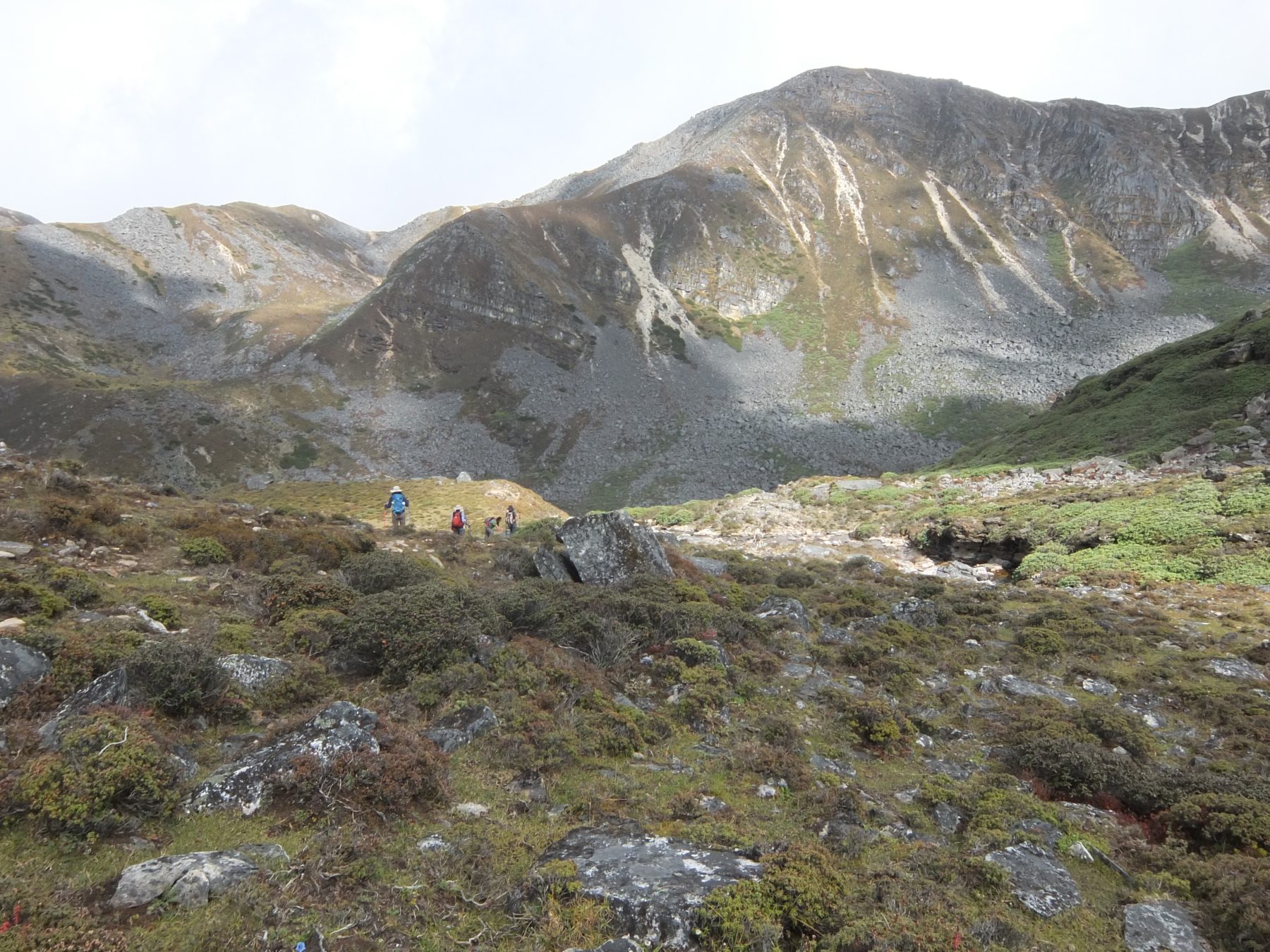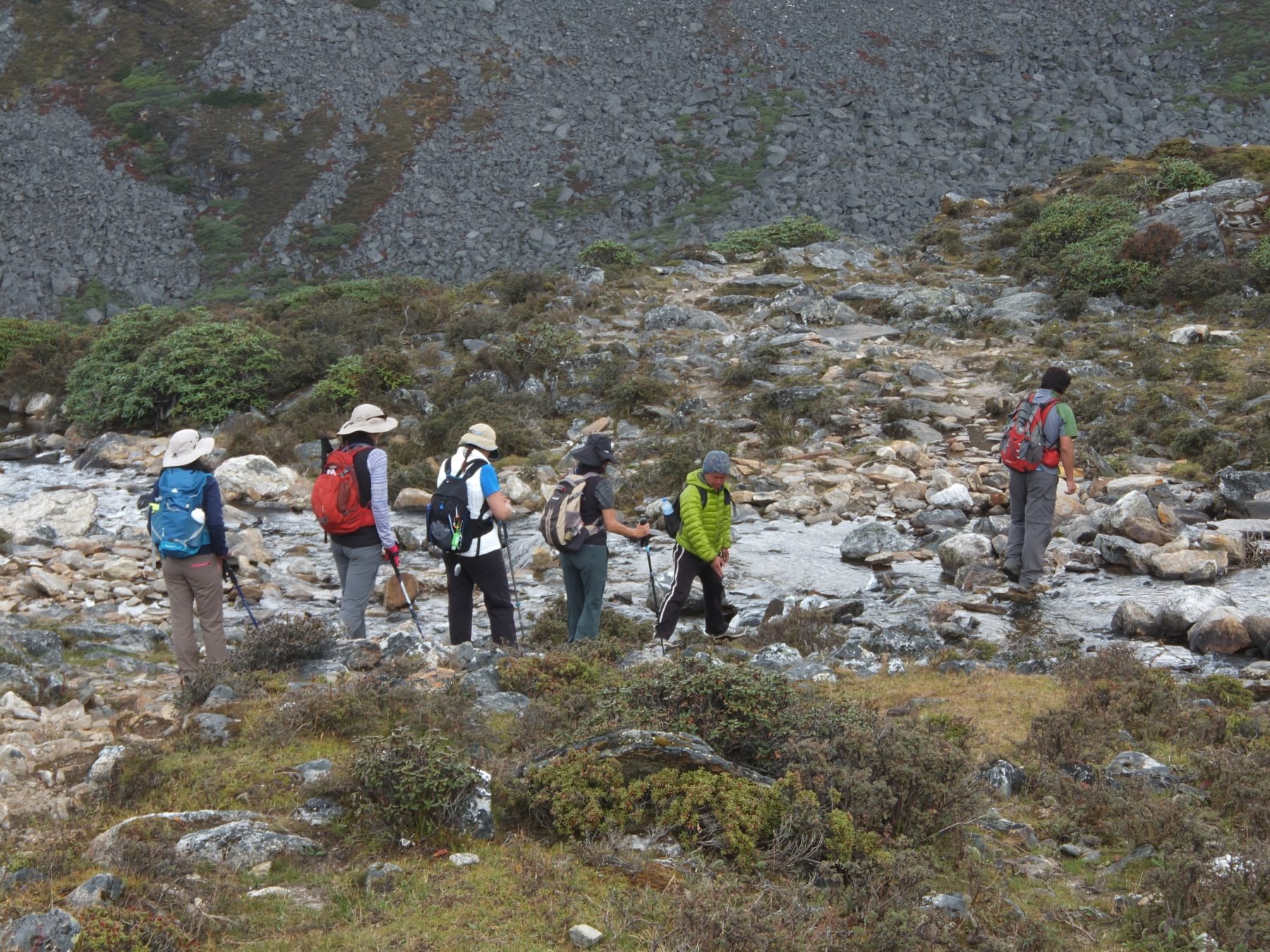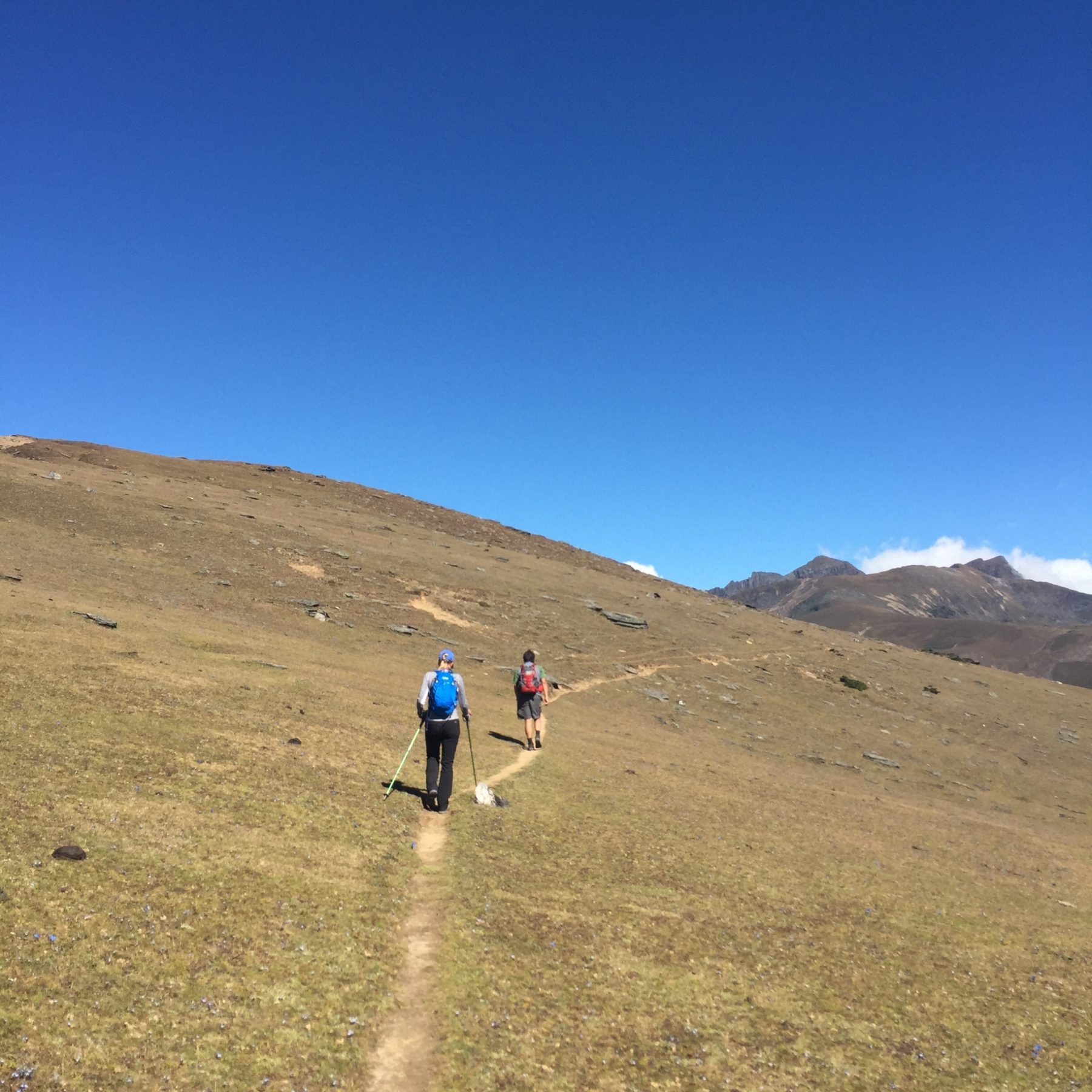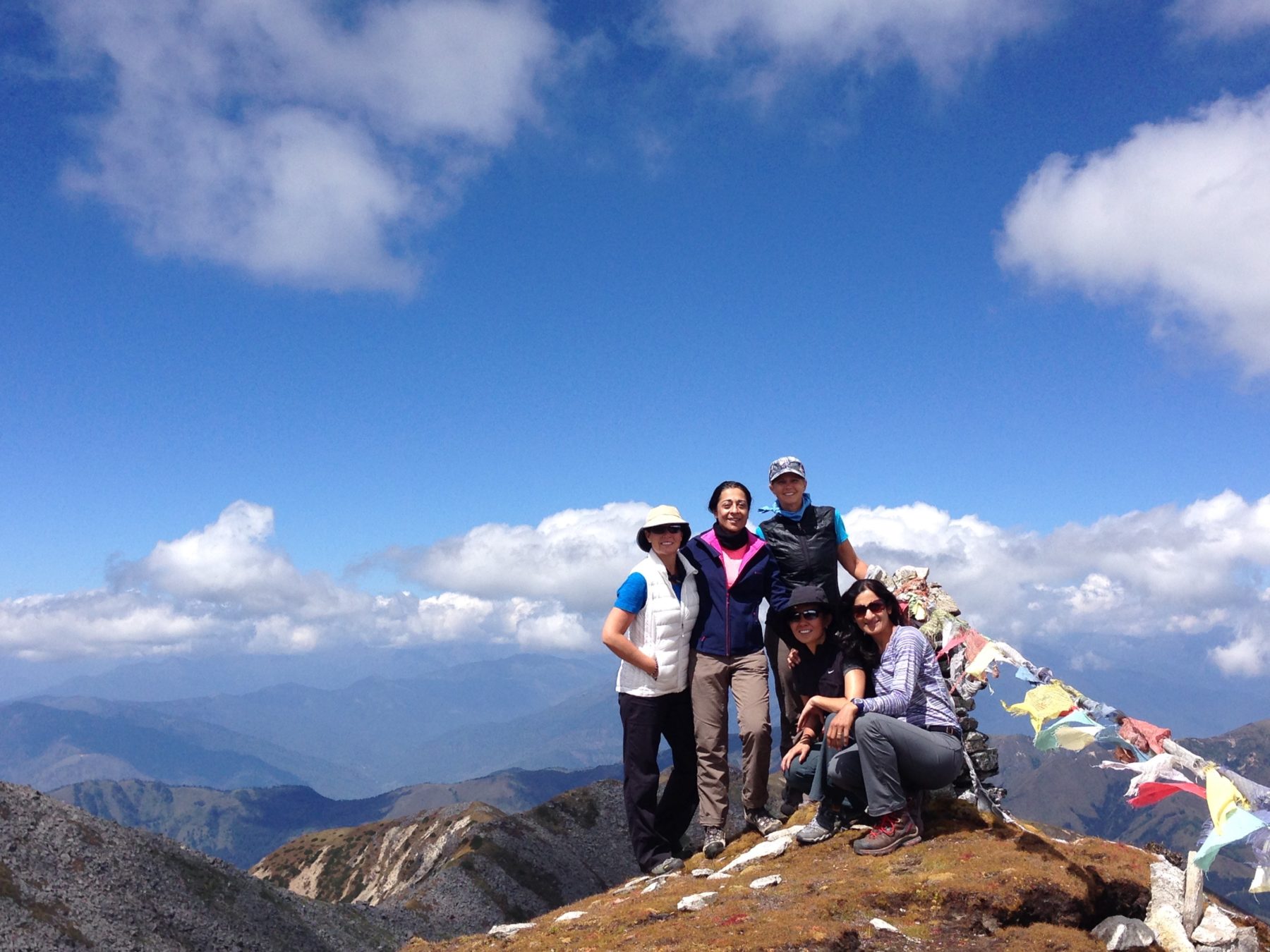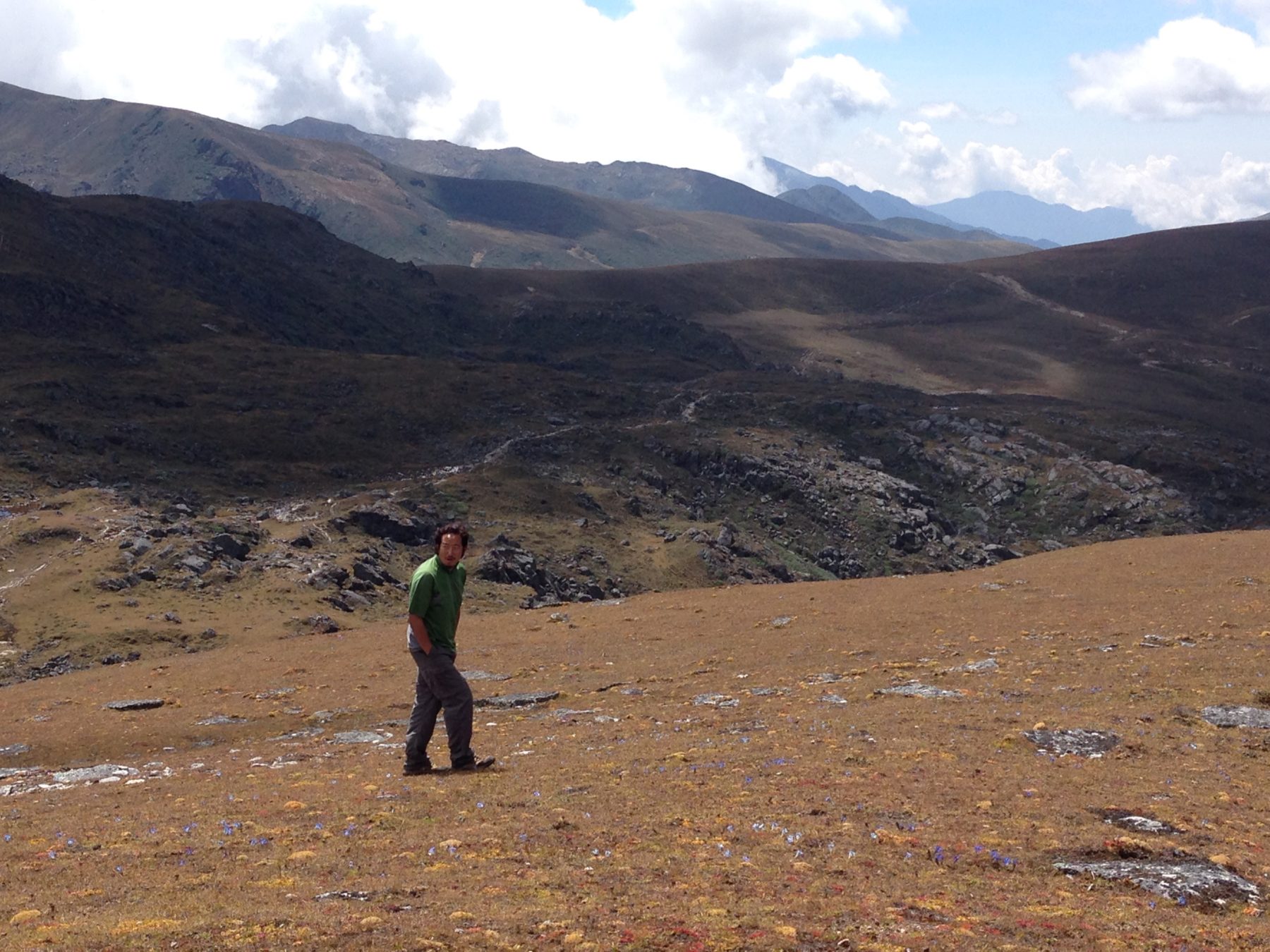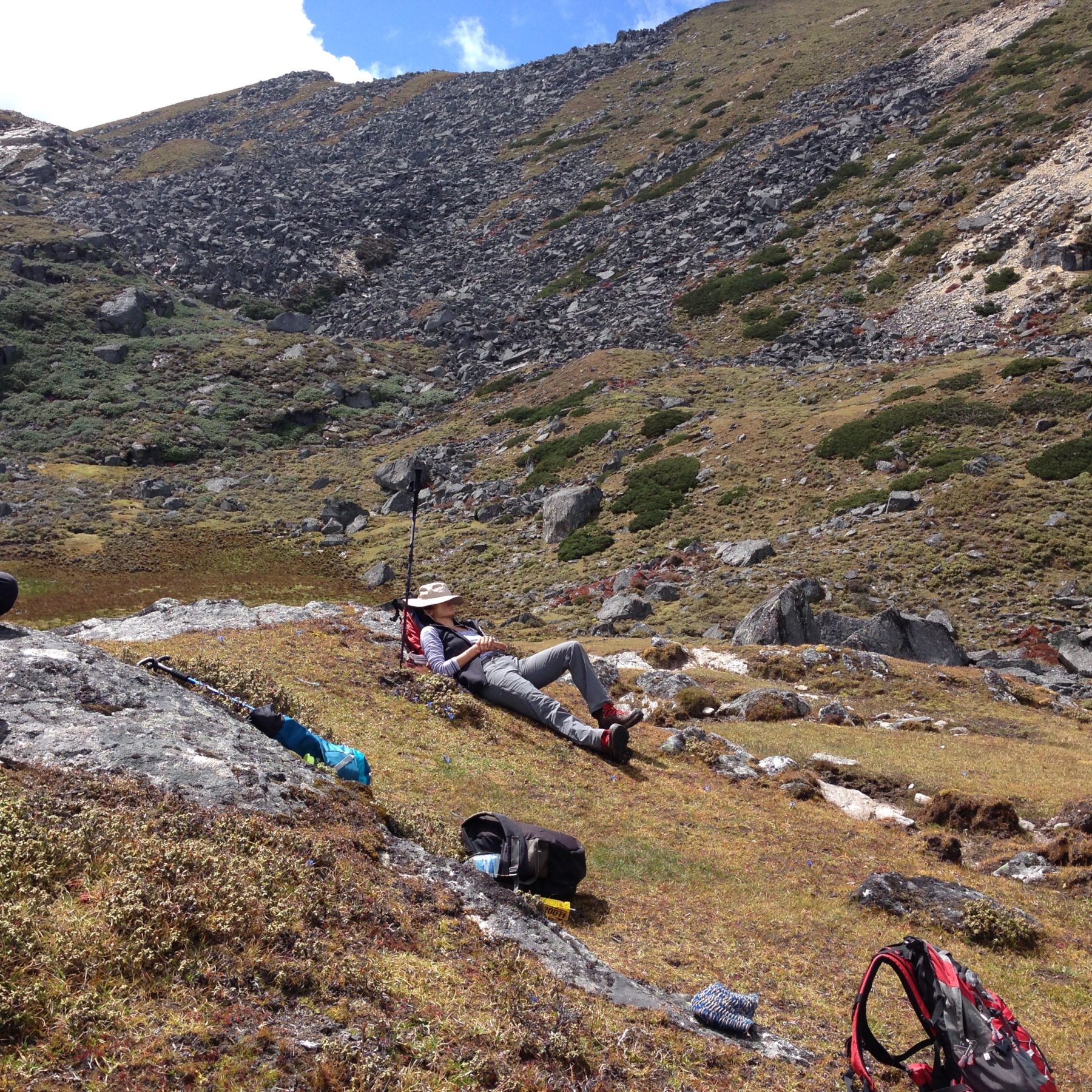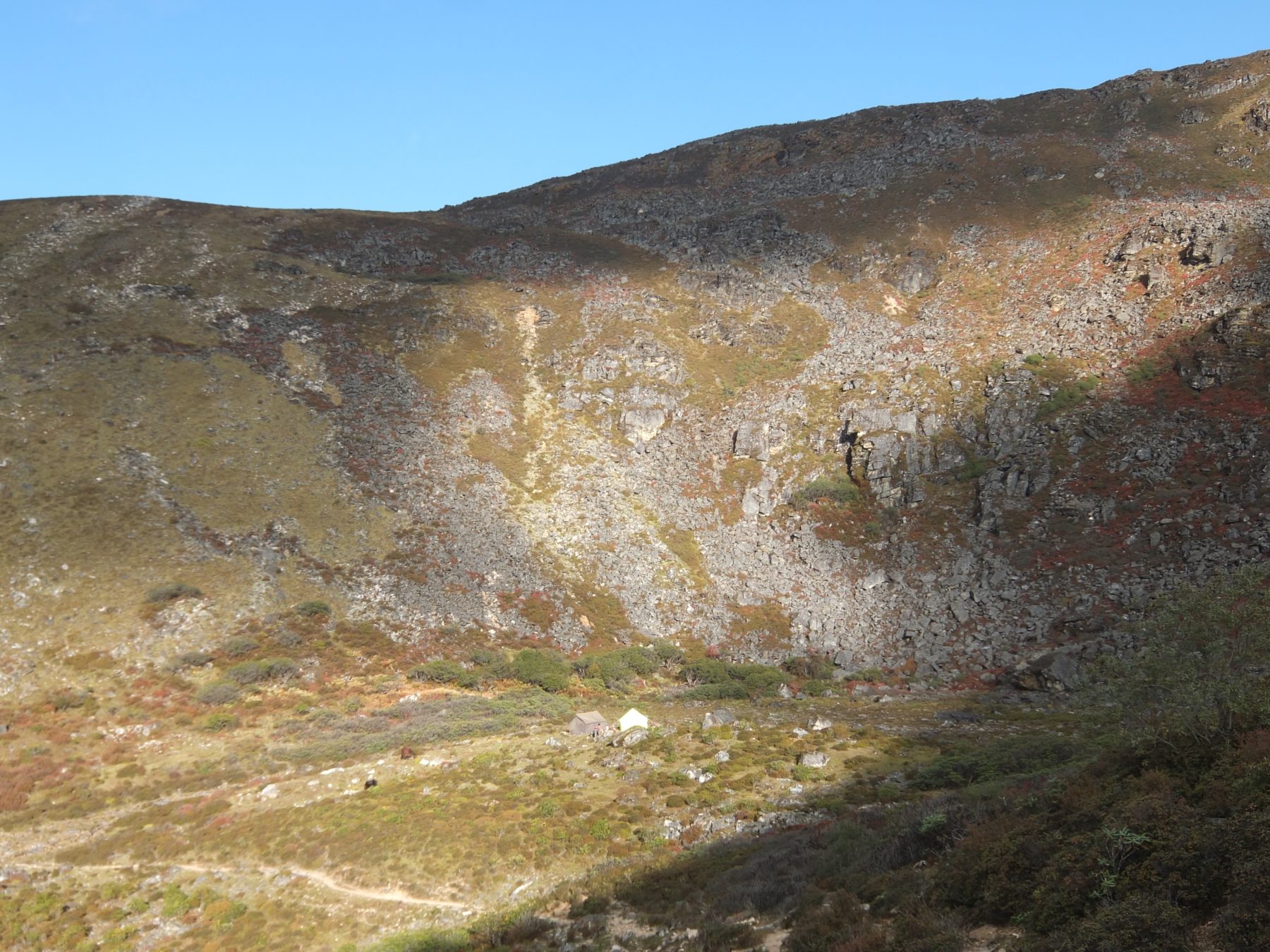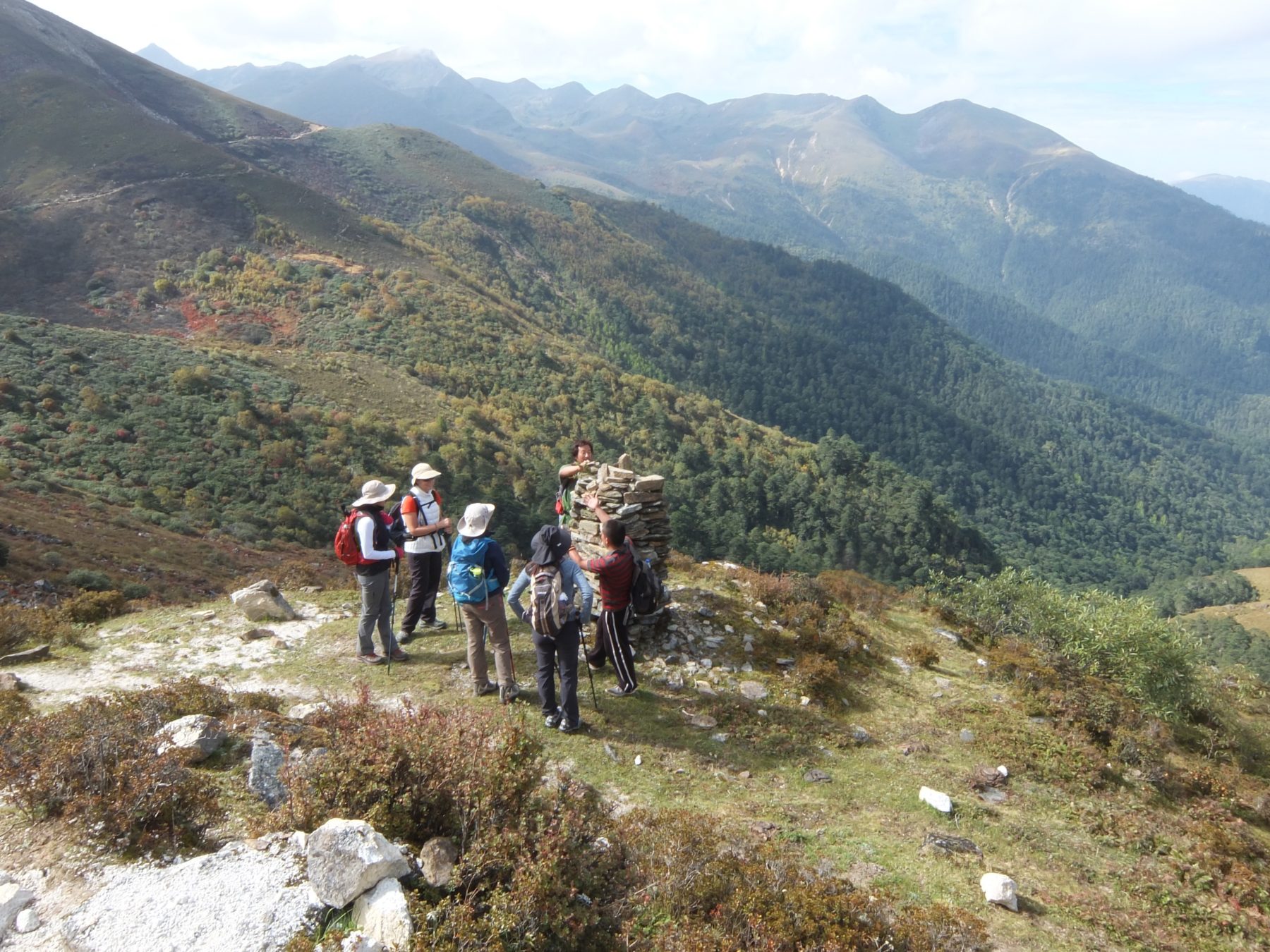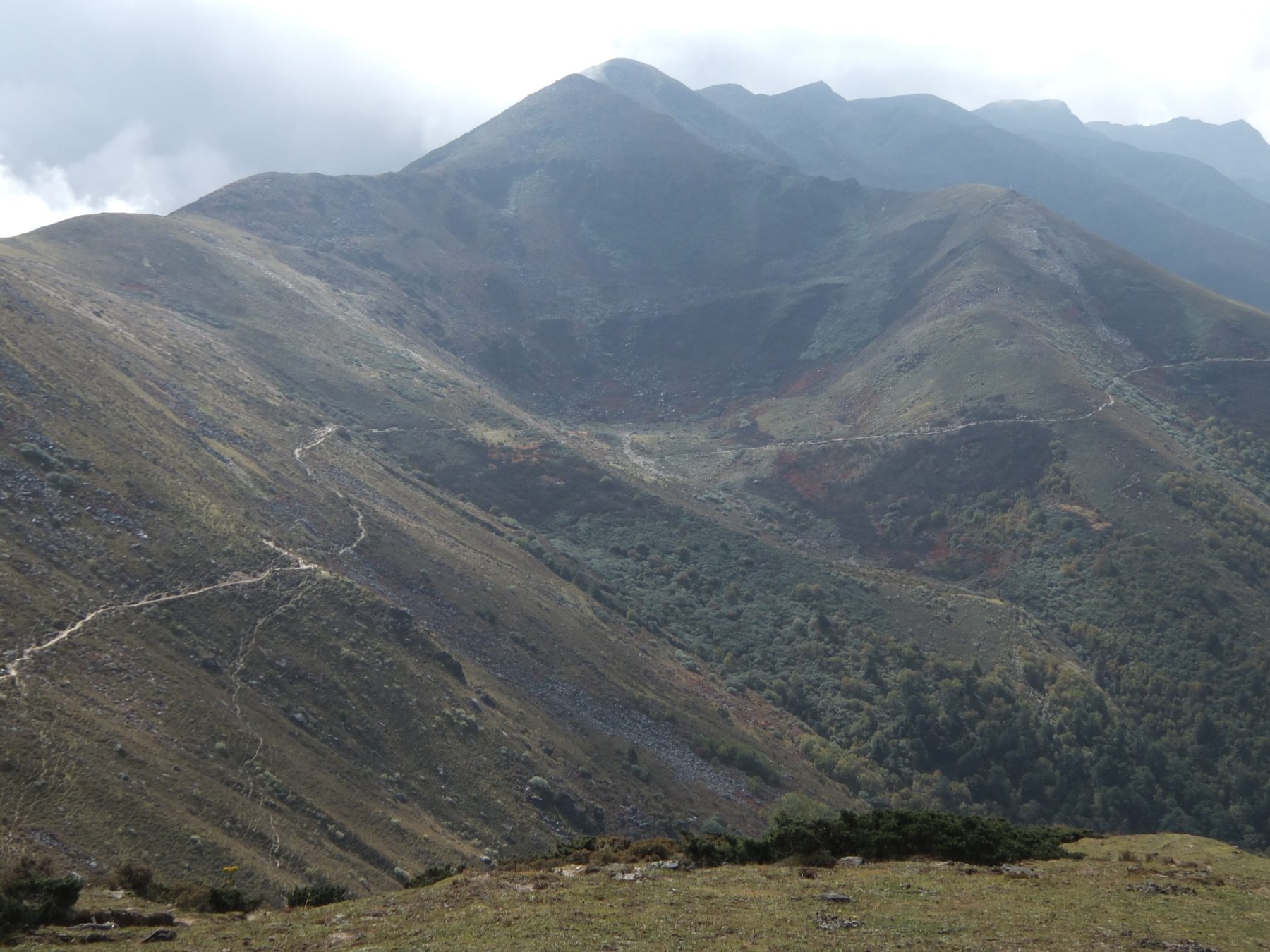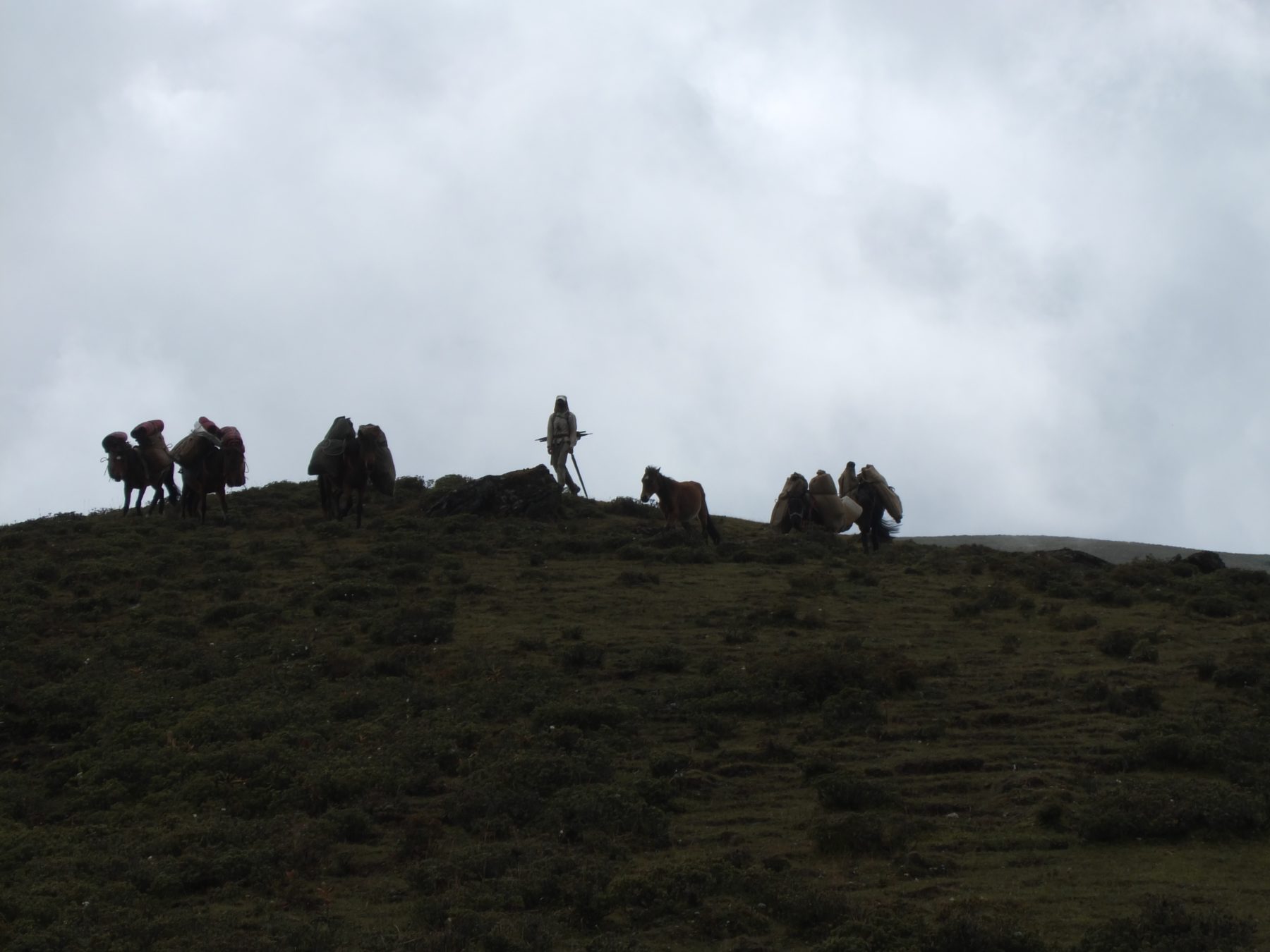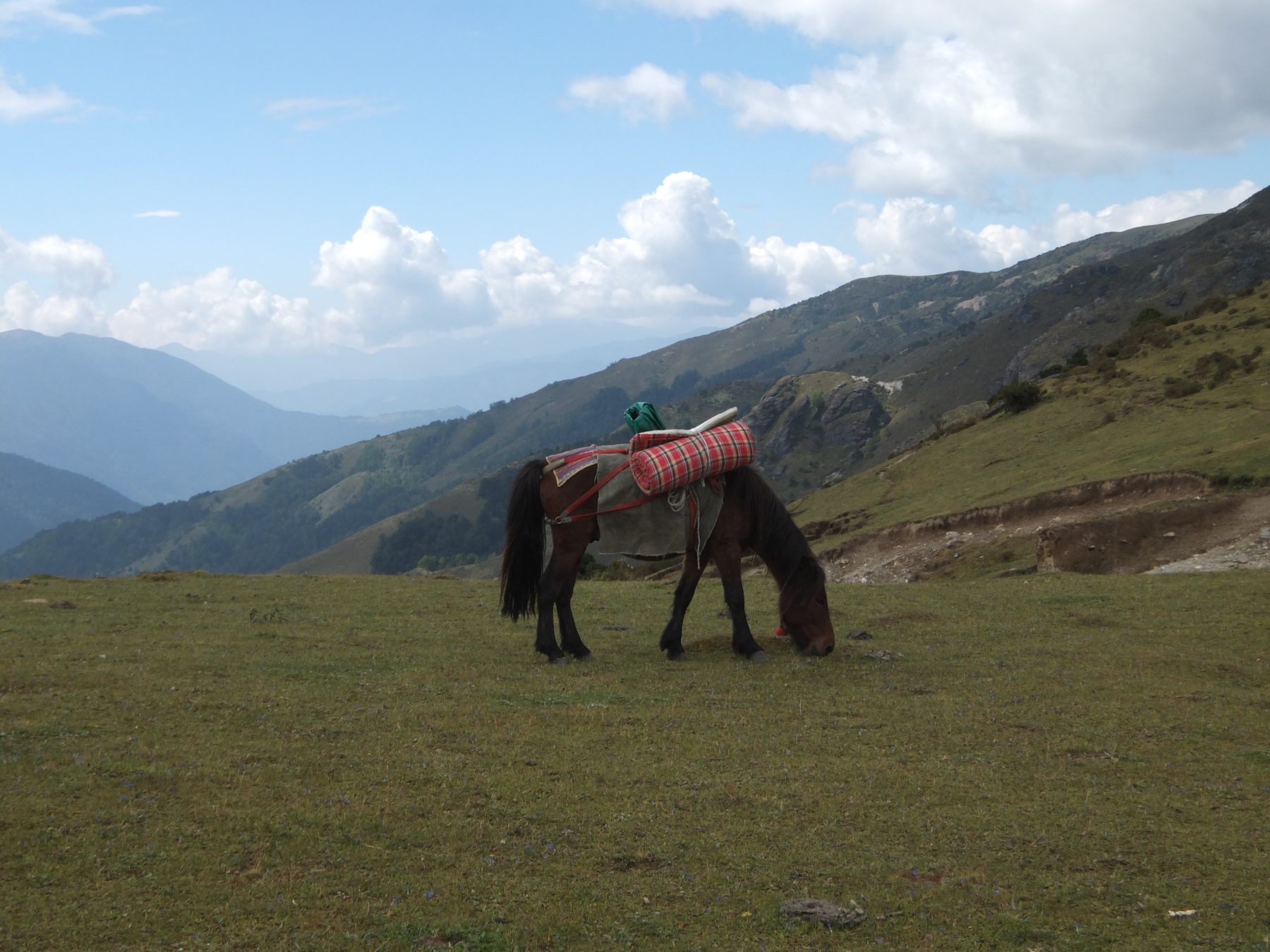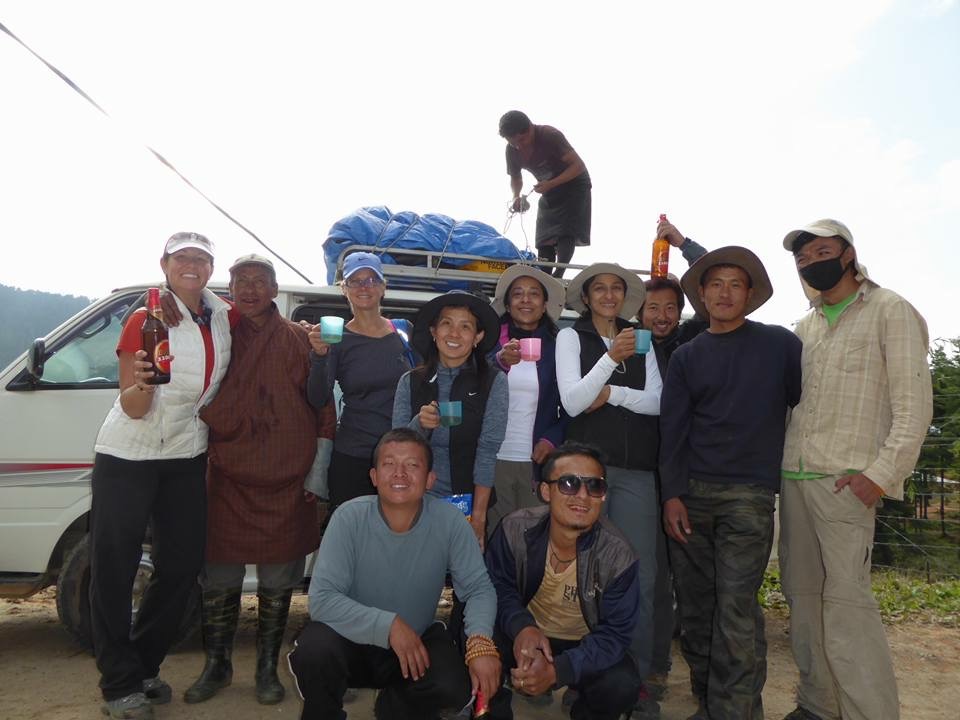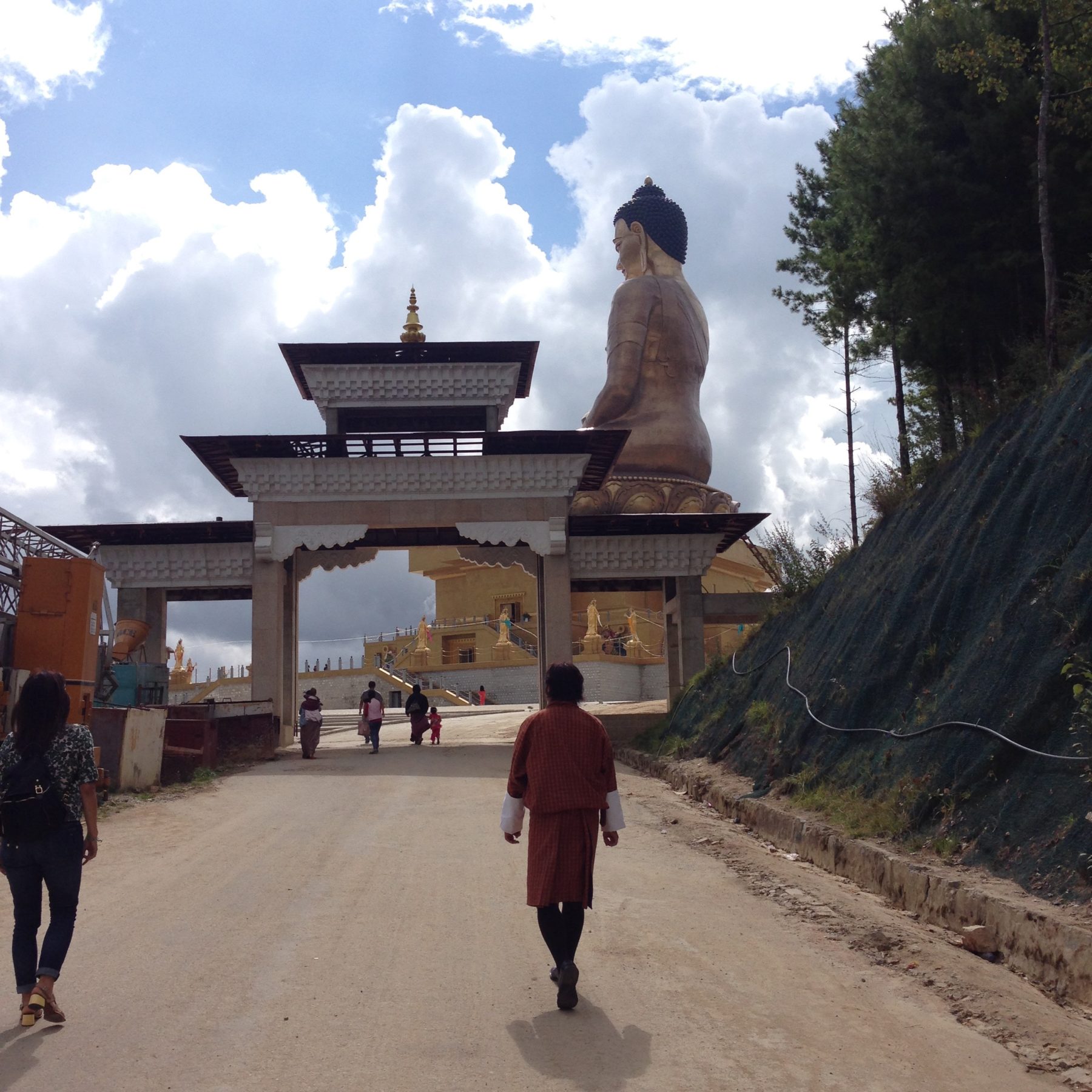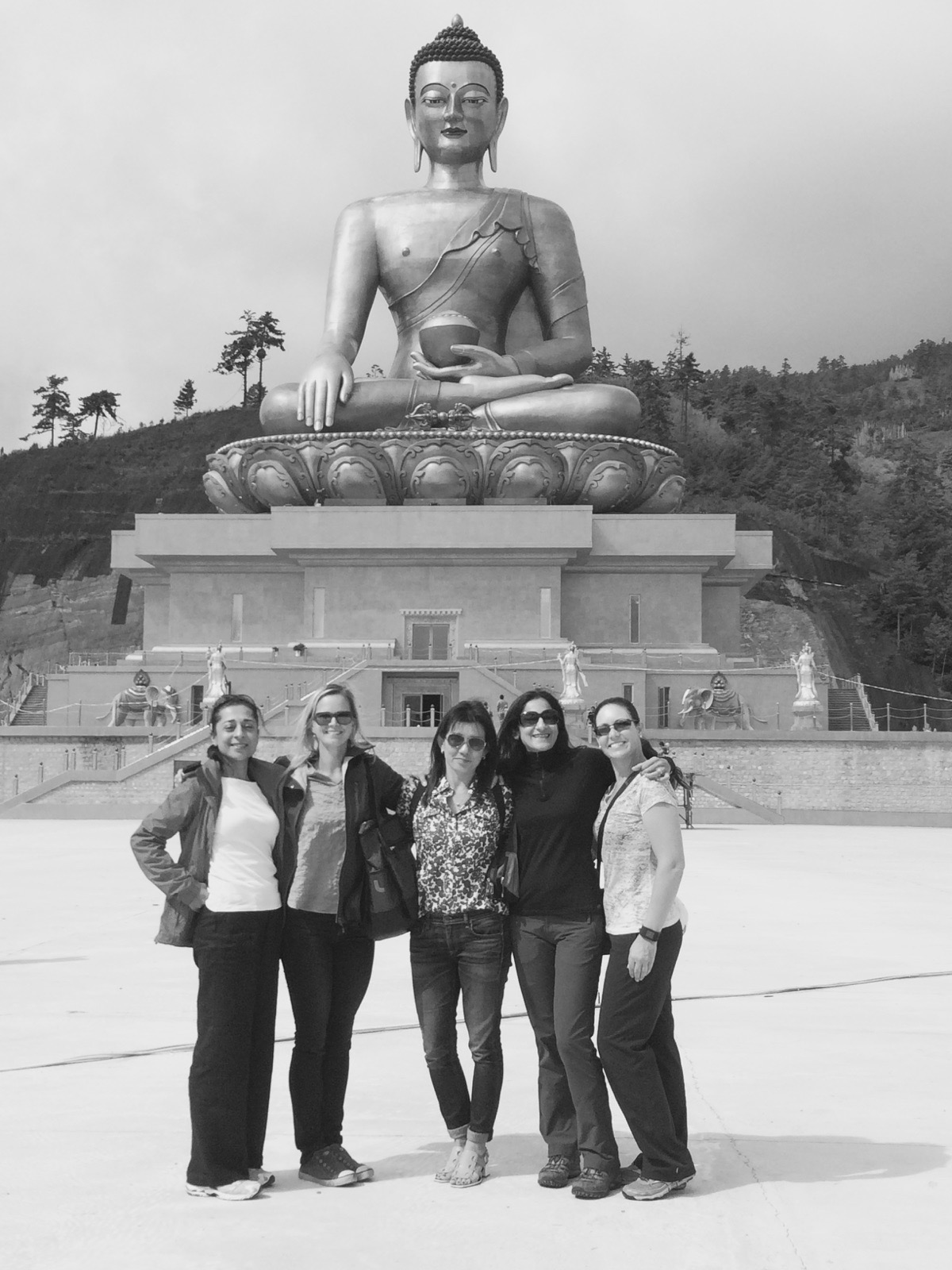Tiger’s Nest Monastery
Bhutan Dagala Trek
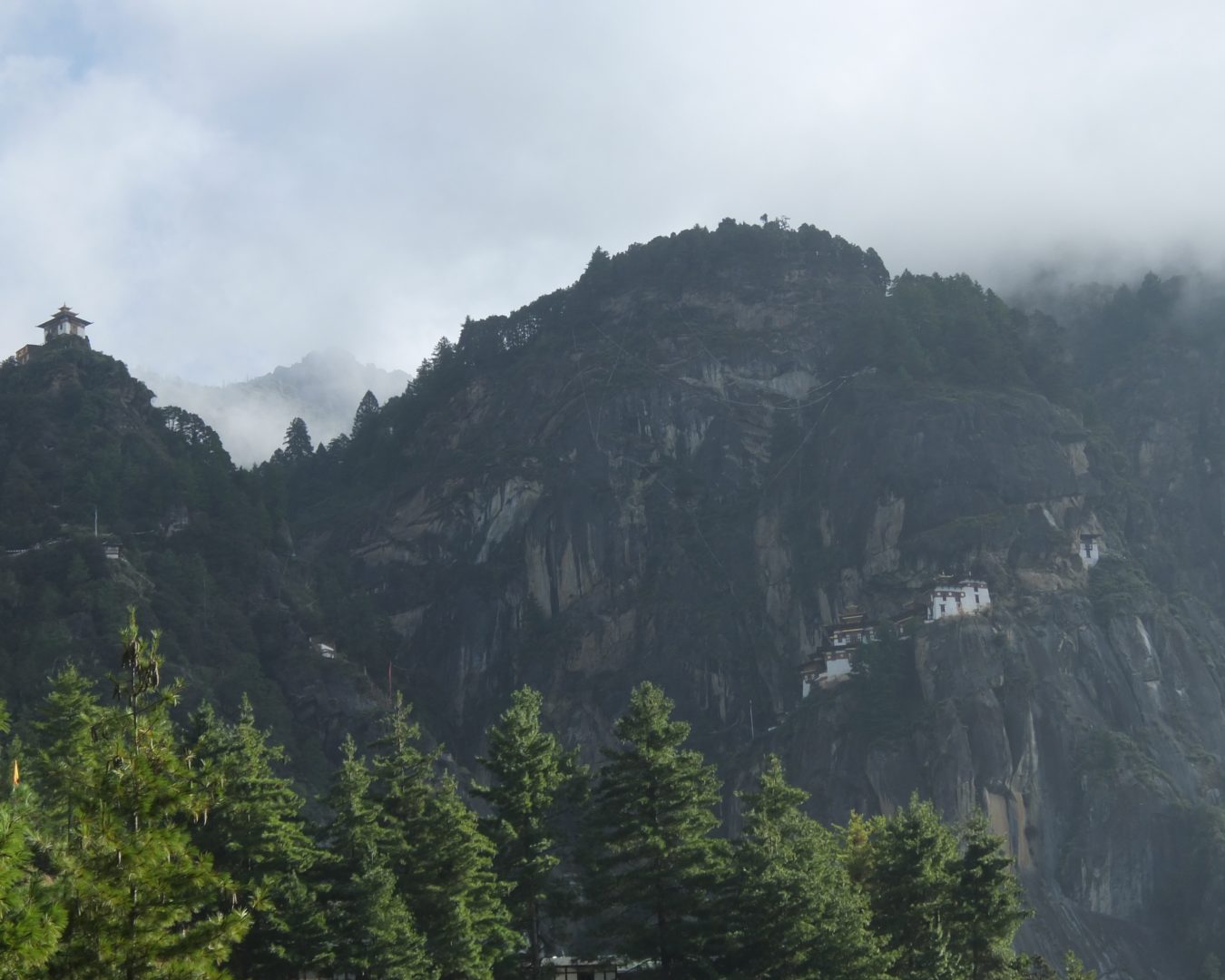
Landing at Paro International Airport is considered one of the most challenging airports for pilots. Planes enter through a long narrow valley and the pilot must make several sharp turns to avoid high ridges on both sides before the runway becomes visible on the last turn.
We were eager to explore Paro and the Rinpung Dzong did not disappoint. This is classic Bhutanese architecture and was once a monastery and fortress. Now it is the Paro government offices.
Chillies are a staple of the Bhutanese diet. Almost every other rooftop in Bhutan had chllies left out to dry in the sun. We couldn’t wait to try the cuisine!
Discussing the trail with our freindly Bhutanese guide Tsheten Dorji! Bhutanese men and women wear their traditional costumes during the work day. For men, they wear a Gho which is a knee-length robe that is wrapped around their bodies and secured with a belt. The best part is that the upper area is used as a pouch and stores things like cell phones or papers.
Our first full day in Bhutan meant an acclimatization hike where one climbs high but sleeps low. We hiked to the famous “Tiger’s Nest” monastery, which you can see clinging to the side of the mountain behind us.
The Tiger’s Nest is one of the most sacred sites in Bhutan and an iconic landmark. Legend has it that in 7th century AD, Guru Rimpoche flew to the site atop the back of a tigress and meditated in a cave for 3 years, 3 months, 3 days, and 3 hours in order to subdue the evil spirits residing within it. A trip to Bhutan would not be complete without the hike to the Tiger’s Nest.
The prayer flags are encouraging us to keep on the trail toward the Tiger’s Nest.
Money shot with Tiger’s Nest in the background.
The Bhutanese prayer wheels are activated by turning them clockwise with your hands as you say positive wishes for yourself and for all those you care for. They are peaceful, centering and healing.
Tiger’s Nest hangs impossibly on the side of a mountain at 3120m above sea level. Visitors are allowed inside but not allowed to disturb the monks or take pictures.
Buddhist prayer flags are everywhere in Bhutan and promote peace, compassion, strength and wisdom. Prayers will be blown by the wind to spread good will and compassion into all pervading space. This peaceful dog agrees!
A symbol of harmony and fertility, the phallus is painted on buildings and homes in Bhutan. It is also said to keep away evil people, spirits and gossip. Maybe that’s the reason why Bhutan is known to have the happiest people.
The hot stone bath in Bhutan is a great experience! This humble shed located on a farmhouse was rustic and authentic. We were given Butter Tea by the owners while they prepared our bath. The tea was salty and sweet and it prevents chapped lips and keeps the body warm.
Adventure time! Packs on and ready to start the Dagala Thousand Lakes Trek in Bhutan.
Gear for our 4-day, 3-night trek along the Dagala Trek route is packed and loaded into woven sacks that will be strapped onto horses. We were travelling with a pack of 10 horses and their very capable horseman.
Day 1 of the Dagala Trek: The transport vehicle dropped us off above the village of Genekha, at an altitude of 9,186 feet. We chose the Dagala Trek over the more popular Druk Path as we wanted something a bit more challenging.
North Face: perhaps a missed sponsorship opportunity? Our next trek is available for sponsorship!
Our pre-hike ritual. All the months of planning, emails, reservations and decisions are behind us and we are ready to embark. So thankful for friends who without hesitation said “Yes” to the Bhutan adventure.
Our 9 mile hike from Genekha to Gur starts off with this chain bridge.
We can’t believe we’re in Bhutan hiking the Dagala Trek! And the blue sky is such a surprise. The forecast was for rain every day and our guide Tsheten had warned us that rain is inevitable. He had never taken a group on this trek at this time of year without rain. Will the weather gods be good to us?
It’s a quick ascent on our way to Gur as we walk along the coniferous forest. Other than a government-owned cabin for nomads, these were the last structures we would see for the entire trek.
Tsheten Dorji, our guide and now our friend. From the moment he picked us up at the airport, we felt at ease with Tsheten. His inner calm made trekking with him a peaceful, mindful experience. We grilled him about Bhutanese traditions and the Bhutanese mindset. We had learned from a passenger on our plane over, a local, that Bhutanese do not joke, and do not understand irony. We respected this, but over time, Tsheten and his crew were yukking it up with us like the best of them. His is truly a warm and friendly spirit.
Actually, this trek was Sonali’s idea. She lives in Dubai, but knew Dagmara from her time in Chicago. We were cooking up a plan to meet somewhere to hike, and she picked Bhutan.
The horses and horseman have already unloaded the gear at our campsite near Gur at 10,794 feet. The horses are taking the rest of the day off. Some of them are allowed to roam freely, and are rustled back up in the morning.
The Kanchenjunga range was our backdrop as we hiked from Gur to Labatama on Day 2 of our trek. Stacey and our guide look for Blue Poppies, the national flower of Bhutan.
Once thought to be the highest in the world, Kanchenjunga is now listed as the third highest mountain in the world, after Mt. Everest and K2.
Sisters Sonali and Roopali at the Pagalabtsa Pass. They had never gone a trek before, had limited hiking experience and trained for months in preparation for this trip. Do you think they loved it?
The cairn at Pagalabtsa pass, 13,910 feet. For Buddhists, the construction of a cairn is a form of worship and a way to ask for good fortune. In Bhutan, you’ll find cairns covered in prayer flags, blessing the surrounding area and promoting peace.
The luxury of a loo tent becomes a morning adventure when there is frost on the ground.
Overnight at our campsite in Labatama, the temperatures plummeted. We tucked metal water bottles filled with boiling water into our sleeping bags to keep warm.
Hiking to our next destination: Panka. The trail is rugged and remote.
At each river crossing, Tsheten paid homage to Dagala, the goddess of the mountains.
We’re alone in this vast, open landscape. We chose the Dagala Trek for being more off-the-beaten-path, but it is strange to trek without another soul in sight. The positive side is that it affords plenty of time for introspection and reflection.
This was the moment that Top Set Trekkers was born. We all felt it: a sense of accomplishment, camaraderie, support and personal growth. Friends old and new, met in Bhutan and encouraged each other to reach this summit at 14,920 ft. Trekking impacted our minds, body and spirit. And we were hooked!
Our guide Tsheten radiated an inner peace and happiness.
Sonali took advantage of a soft patch of grass and sunshine. A quick snooze on the trail can rejuevnate you for the next section ahead.
After climbing to our highest elevation of 14,920 feet, we hiked back down to a more modest 13,120 feet for our overnight campsite in Panka.
Our guides add their stones to the final cairn on our trek.
Looking back on where we hiked across the Dagala mountain range.
The clouds are gaining on us as we make our way across the final mountain pass.
A horse gets to munch on some grass during a quick break before our final descent. Their loads are much lighter now that we’ve eaten all of the food and used up all the cooking fuel.
End of trek celebration with all of our guides! Our cook’s helper guide injured himself with his giant machete on the first day and walked ten miles, bleeding, to the hospital so we were relieved to see him again. And would you believe that minutes after this photo was taken, as we pulled under the cover of the hotel carport, the clouds opened up and it started to pour? It seems that Dagala, the mountain goddess who reigns over the lakes, was taking care of us on the mountain. And we are forever grateful and acknowledge her on every hike.
Our final day in Bhutan was spent in Thimpu, Bhutan’s capital city. Tsheten in the traditional Bhutanese gho took us to the giant Buddha statue celebrating the 60th anniversary of the fourth king of Bhutan Jigme Singye Wangchuck. It took almost 10 years to construct and we were so lucky that it was completed just 10 days before our arrival.
This final picture of us in Bhutan in front of the Buddha Dordenma statue perfectly captures our mood: gratitude for the time spent, exhilaration for what we accomplished, and contentment for the peace we discovered in the mountains. Thank you Bhutan!
The trip where Top Set Trekkers was born! 5 women, 10 pack horses, 2 guides, a cook, a horseman, and a tea helper. Any country that measures Gross National Happiness deserves a visit, but Bhutan is much more than feel-good statistics. The first roads in Bhutan were built only in the 1970’s. The trails and treks, hundreds of years old, offer breathtaking landscapes and the opportunity to consider the serene humility of nomadic life, visit sacred sites like Tiger’s Nest Monastery and choose your path from a variety of challenging adventures. We chose the Dagala Thousand Lake Trek–off the beaten path. We explored the untouched wilderness and pristine environment of the Himalayas and scaled to 80 feet shy of 15,000.
Bhutan Dagala Trek

Bhutan Dagala Trek
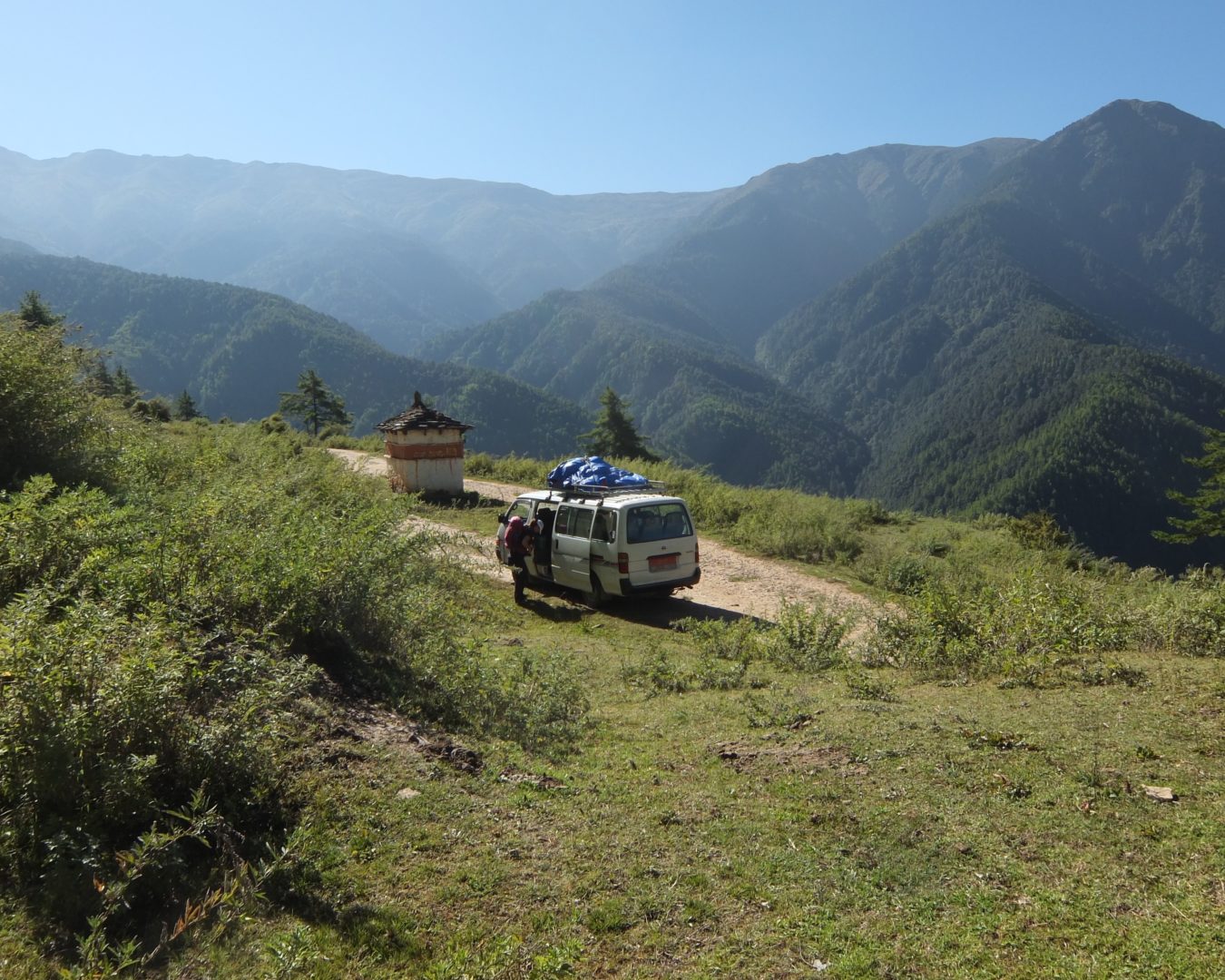
Bhutan Dagala Trek
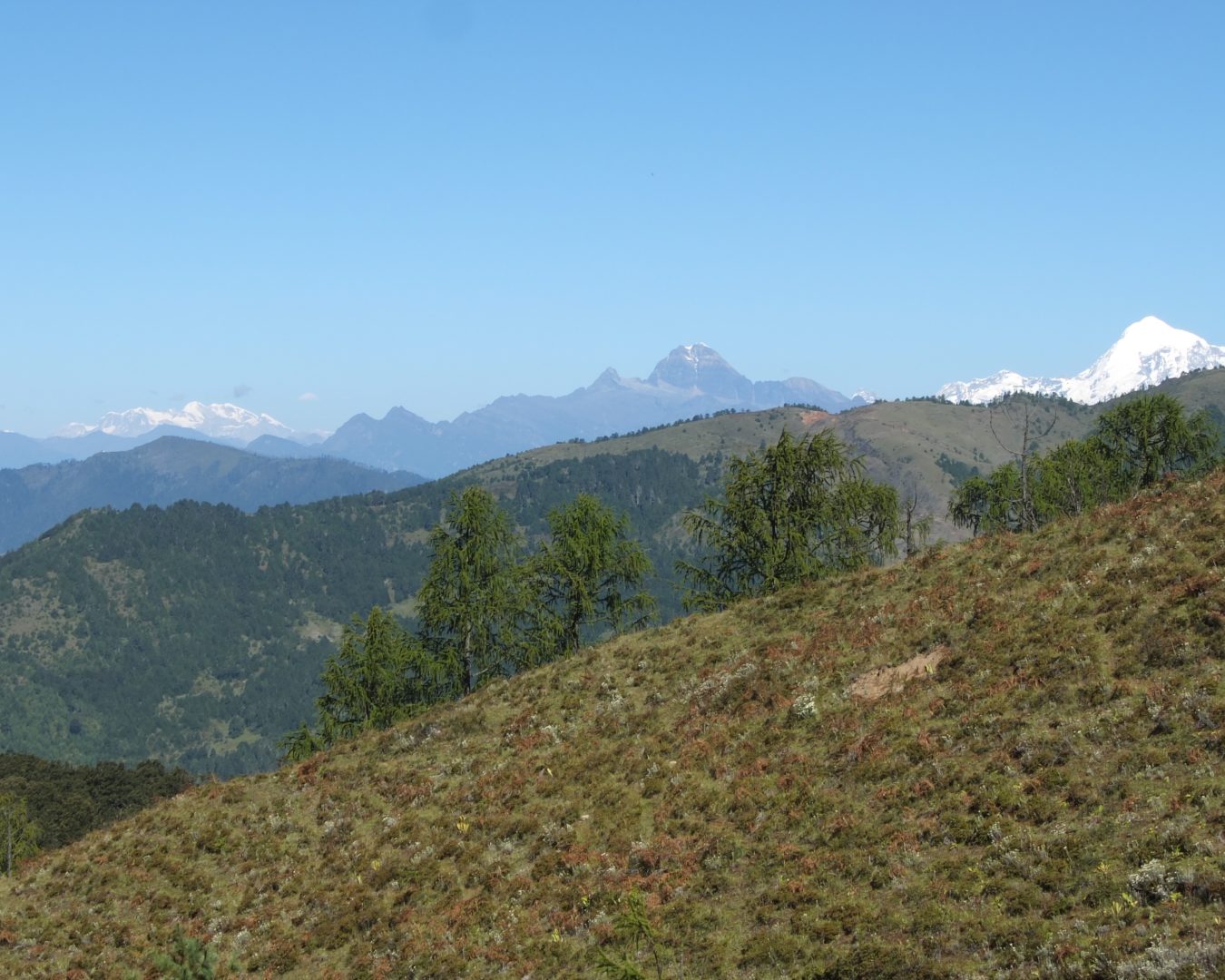
Bhutan Dagala Trek
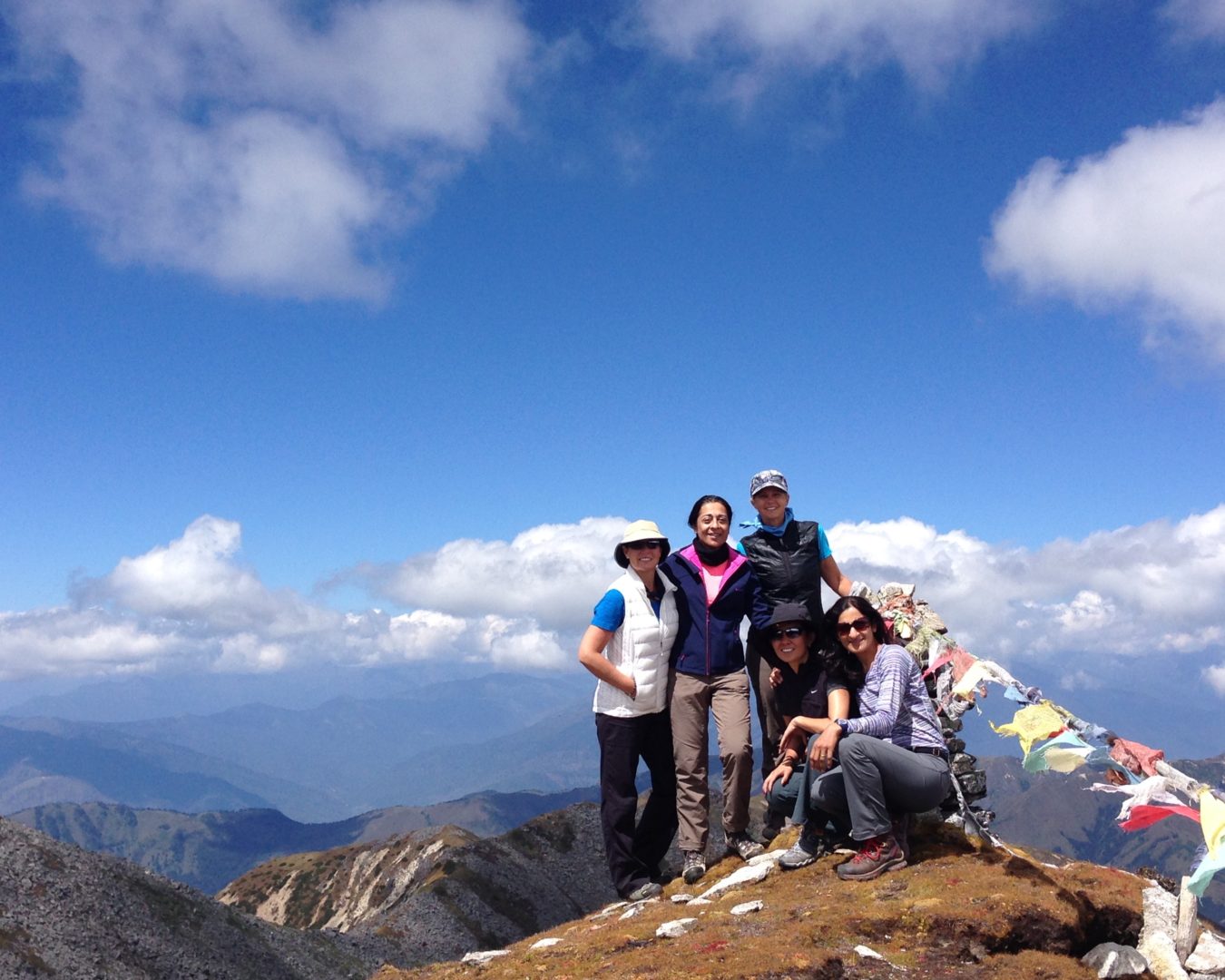
Bhutan Dagala Trek
